Essay Question: From the intricate relationship of creative industries, real estate industries, and spatial stratification in Ningbo experience to see “the production of spaceâ€
Posted: April 2nd, 2010 | Author: yangwu | Filed under: creative industries, real-estate | No Comments »As per my own life experience in Ningbo during last several years, this city changed a lot in its urban space formation. A bunch of creative clusters are constructed or on construction. Most of them are rebuilt on the base of closed state-own plants, taking the remaining advantages of centre location and large scale of areas.
The background of this change is obvious. Even in the propaganda painted on the street wall, Ningbo shows strong ambition on driving an industrial structure revolution for its regional economy. Then, aiming to raise the proportion of the tertiary sector and its value-added creating power, the creative industries as one of most rational industry models was awarded high priority and put on a short agenda.
Though the initial proposal of developing creative industries is to generate economy from creativity and innovation, the Ningbo case is much more complicated from our field observation. The creative cluster or park seems mostly be finalized in a complex fashion, including real estate industries and other commercial industries like big shopping mall.
So, my initial thought is to investigate the underlying factors which shift the way how Creative Industries proceed in Ningbo, and try to relate this phenomenon to the study of political economy of space.
Trip to Creative1956
Posted: March 26th, 2010 | Author: yangwu | Filed under: creative industries | Tags: creative clusters | No Comments »Got a first spot to visit: Creative1956… formerly one of the state-owned factory of transformer manufacturing, now is changing to an imaginary plant for producing creativity…It’s said that this is going to be the largest loft basement in Ningbo~~Should we go and see how is everything going there?!
打å¬åˆ°ä¸€ä¸ªåœ°:创æ„1956~~原å˜åŽ‹åŽ‚改建的~~å¬é—»,è¦æ•´è£…æˆå®æ³¢æœ€å¤§ä¸€LOFT基地…这就去拜访一下å§!
The Planning Map~
规划图~
A first sight, Poor Gate!!… The factory sign was abandoned and took off!~~However, lucky for it, in near future, a new exterior signage will have its new name framed here, reminding the original birthday of this place:1956
å±å’äº†å‡ å年的国è¥å˜åŽ‹åŽ‚!如今,门头也被拆了!ä¸è¿‡ï¼Œæ–°ç‰Œå·åˆ›æ„1956ä¿ç•™äº†å…¶æœ€åŽ†å²çš„部分~~OK啦~
Look from this way (oppositely): green lane …beautiful sight~~~
å¦ä¸€è¾¹çš„风景很好…绿æ„浓浓的林è«å¤§é“~~
Beside, several boilers still stand erect..Though, it’s of no use now, one might remember its busy days back to the new China’s industrial revolution period.
远处åšå¼ºå±¹ç«‹ç€çš„å‡ ä¸ªå¤§é”…ç‚‰ï¼Œä¾ç¨€èƒ½çœ‹å‡ºå½“å¹´æ–°ä¸å›½å·¥ä¸š”é©å‘½”时期”大干了一场”的风采啊
Basically, the building structure has no change~ Red colour steel bars are newly included elements, transforming the old manufacturing plant into another creative workshop!!
PS: Here located Loft group No.1 and No.2: centres for industrial design, architect design, IT and the relevant allocation.
基本上è€æˆ¿çš„原结构ä¿æŒä¸å˜…红色的钢ç‹é“éª¨æ˜¯åŠ å…¥çš„æ–°å…ƒç´ ~~~åˆ¶é€ å·¥åŽ‚ä¾¿æ‘‡èº«ä¸€å˜åˆ›æ„工场啦~PS:æ¤ä¸º1å·åŸºåœ°,主打工业设计,建ç‘设计, ITåŠç›¸å…³~
A small, cute garden got reserved~~In those days, most state-owned factories had such facilities (small area for leisure)…so… while mothers and dads were working in the workshop, their children can play  around or do homework ~~
PS: Loft group No.3 is here, proposing for planar and 3D design,film and image design, and the relevant allocation.
ä¿ç•™äº†å°èŠ±å›~那个年代的国è¥åŽ‚æˆ¿éƒ½è¿™æ ·…大人上ç,å°å©è¿˜æœ‰ä¸ªåœ°å¯ä»¥æ’’野~~
PS:3å·ç»„楼集åˆå¹³é¢ï¼Œ3D设计,电影和形象设计åŠå…¶ä»–相关é…ç½®
By reading after the planning map, it seems that this group of lofts hasn’t been appointed any specific business type…Will it be the place only for eating and drinking (reserved for consumption)?~~
仔细对照规划图, å‘现这组楼用途ä¸æ˜Ž,éš¾é“是åƒåƒå–å–区?~
Loft group No.5 for film industries…several independent Lofts, one sticking to another…Not sure how to use, but it could be a perfect place for film studio, right?!
5å·ç»„楼~~摄影行业。一个一个独立的框架LOFT…éš¾é“是摄影棚~~
This should a huge job of “replacing”~~almost rebuilding the workshop~~only the underground basis got saved!
这个翻的彻底了~~就差没撬地基了!
Simple and clean roof…functions well too~~
简å•æ¸…爽功能ä¸å¼±çš„屋顶~~
The “Uniform” of the outsider walls~
An overall view~
整体效果一览~
The buildings are short…lane is not too narrow…which is good for eyesight and walking experience~
å°çŸ®æˆ¿åŠ 宽间跅视野很好ä¸åŽ‹è¿«~~
No.6-7 for decoration and university students field work base.
6-7å·åŸºåœ°ï¼šè£…饰类,大å¦ç”Ÿåˆ›æ„区
Loft No.7 was formerly a heat treatment workshop…really really huge…
7å·æ¥¼å‰èº«æ˜¯ä¸ªçƒå¤„ç†è½¦é—´,很大很大…
The roof should be new one…here is a zoom-in detail picture: the steel skeleton with bright red colour looks impressive and powerful…
顶应该是掀过了æ¢æ–°çš„~细节图~~红色的新骨架很亮眼很扎实亚~~
Should this old chimney be packaged into a creative vintage landmark?!
大烟囱会被包装æˆåˆ›æ„åœ°æ ‡å—?!
Ningbo Hefeng Creative Square
Posted: June 3rd, 2009 | Author: Shui Jing | Filed under: creative industries | No Comments »Hefeng Creative Square is transformed from Hefeng Cotton Mill. This Cotton Mill has 100 years history in Ningbo. The whole project is expected to be finished by 2011. However, the experience park is already open to the outside.
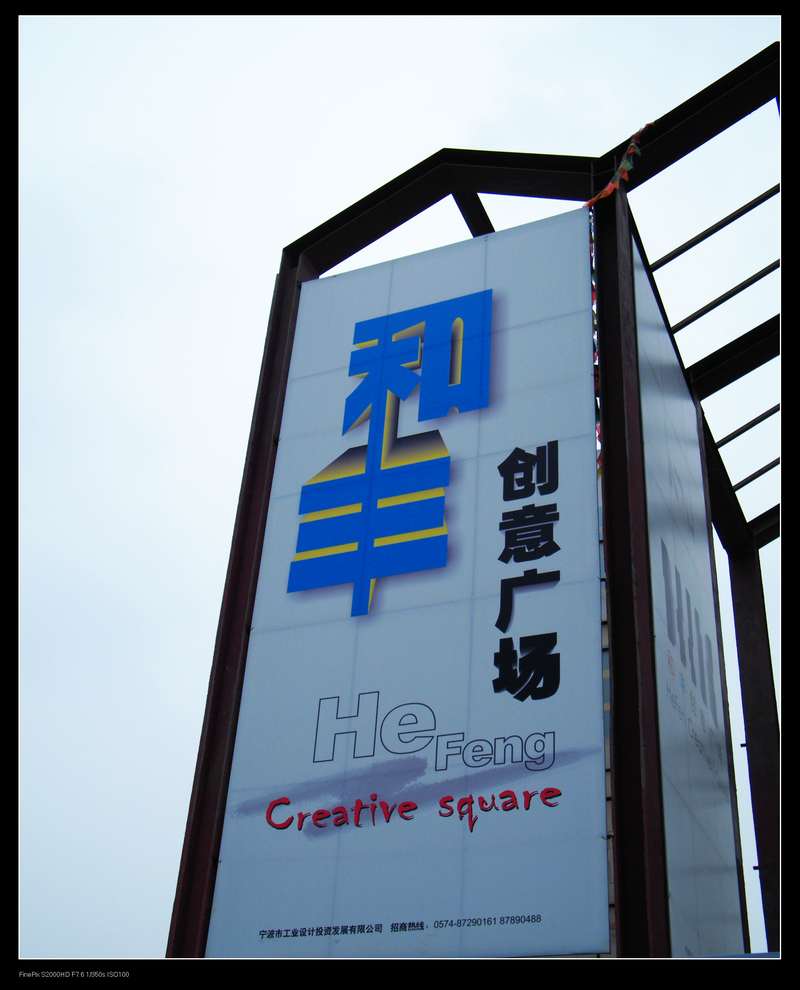
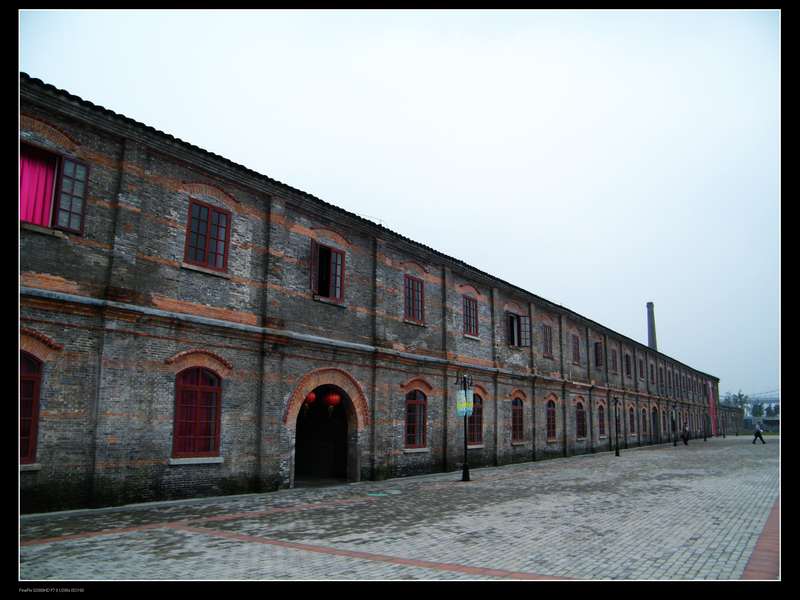
And it is attracted to some companies both at home and abroad.Such as INDES, Yefei Culture, Ningbo Design Center and so on.
Some working places are located in such “containerâ€.
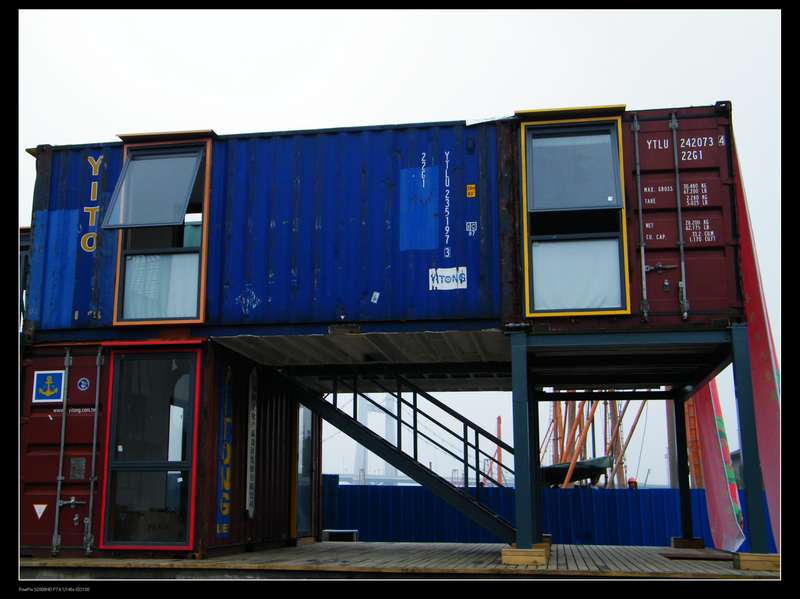
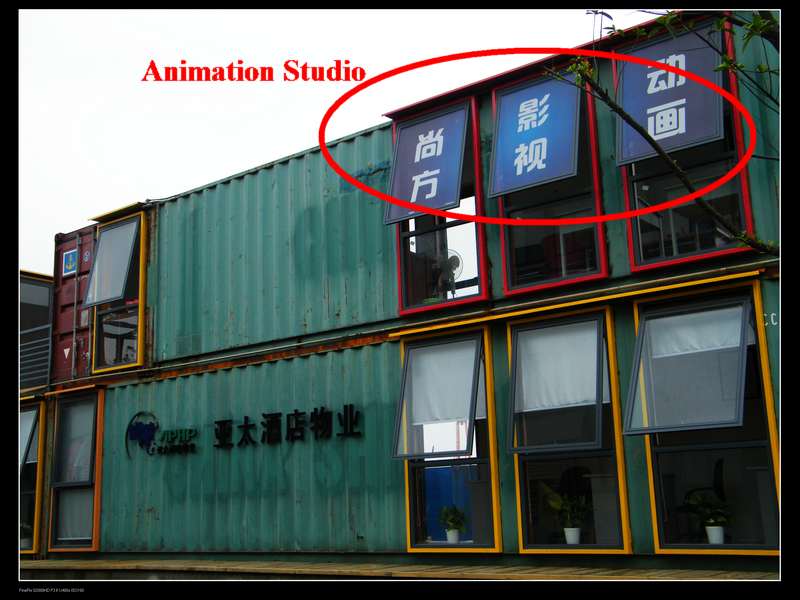
And some studios were moved into the old house.
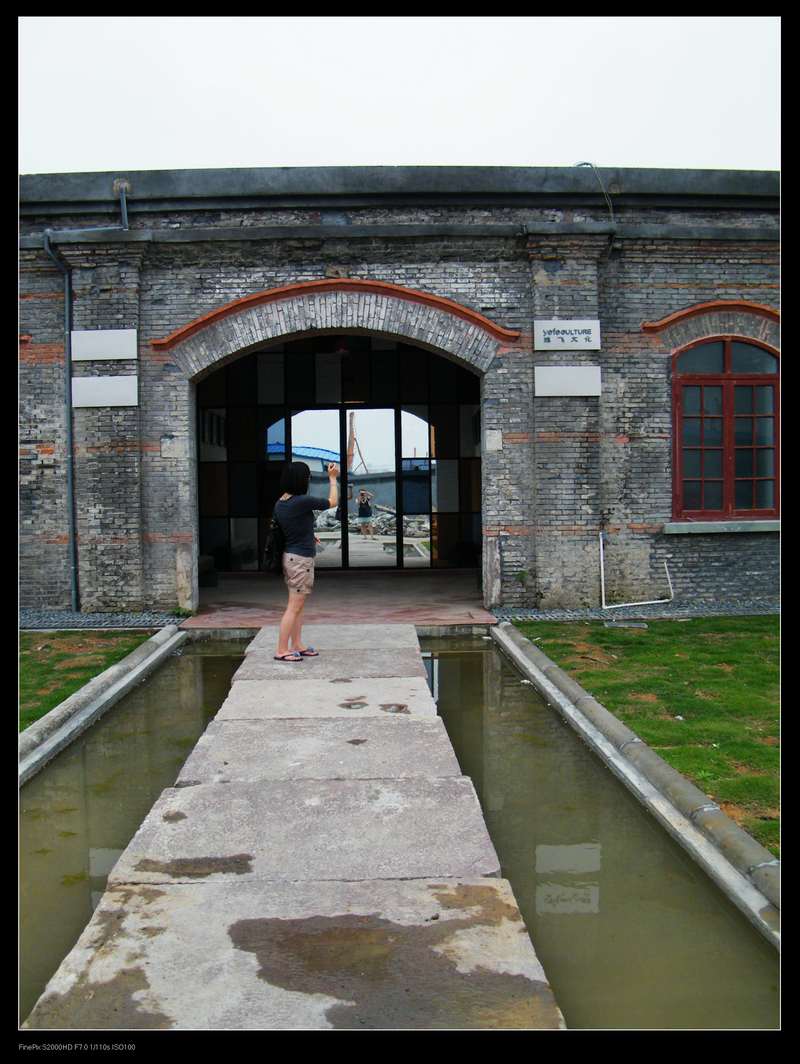

To what extent the developments of creative clusters promote the construction of urban spatial structure in contemporary Ningbo?
Posted: May 31st, 2009 | Author: Xu Shengxi | Filed under: creative industries | Tags: creative cluster, creative industry, urban spatial structure | No Comments »Introduction
The term ‘Creative Industry’ was put forward in UK and has grown up in western countries in 1990s (Rossiter 2008). In UK, creative industry is defined as “those industries which have their origin in individual creativity, skill and talent and which have a potential for wealth and job creation through the generation and exploitation of intellectual property†(Department for Culture, Media and Sport (DCMS) 2002). It covers design, art, architecture, advertising, film, music, video and soft ware, etc (UK Creative Industry n.d.). Creative industry is a new form of economy according to its contributes to economic development. Creative industry started in early 2004 in China has established its formal status and outline since the Eleventh-Five Year Plan in 2005 (Rossiter 2008&Keane 2009).
Cluster originally comes from economic field which means “collectivism and cooperation†(Keane 2009, p.221). Creative cluster is the geographic assembling of creative industry and it includes “non-profit enterprises, cultural institutions, arts venues and individual artists alongside the science park and the media centre†(Porter, 1998 & What Are Creative Clusters n.d.). Besides art creativity and economic earning, creative clusters also contribute to the urban spatial structure, which can be understood as the structure of clusters by using urban public space (Anas, Arnott &Small 1997). Urban spatial structure refers to the distribution and integration of urban elements; it means the shadow cast of urban economic structure and social structure (Lin 2004). To some extent, urban spatial structure can be seen as the spatial form of the development of urban social economy (Ma & Chu 2009).
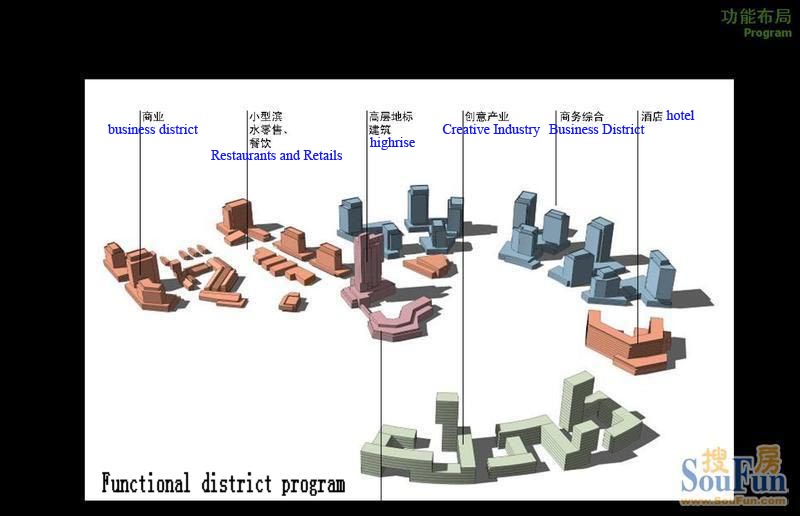
Creative industry develops its early stage in Ningbo; however, it is experiencing a rapidly and sustainable growth (Nie & Wang 2008). The profound economic basis, the supportive policy which proposed in Eleventh-Five Year Plan in 2005 and the long history of commercial manufacture contribute to the development of creative industry in Ningbo (ibid). However, the long-term of “Made in China†brings Ningbo good reputation of Manufacture City but leads to the diversionary embarrassed circumstances which caused by the lack of creative dynamic and independent brand (ibid). Furthermore, perfect creative cluster has not been established in Ningbo because of the lack of creative labour and advanced ideas (Che & Guo 2009).
This paper aims at evaluating to what extent the developments of creative clusters promote the construction of urban spatial structure in Ningbo. Firstly, it examines creative clusters’ effects on adjusting the distribution of urban function districts and the reform of urban structure; secondly, it evaluates the effects on urban economic operation and its contribution to the rebuilding of urban relationship made by the clustering of distinctive industry.
1. Effects on Urban Space
1.1 Adjust the Distribution of Urban Function districts
Michael Keane concludes that “the economic logic of clustering…has been distilled into assorted creative parks, bases, incubators, industrial districts, creative cities, and creative regions†from Michael Porter’s work (cited in Keane 2009, p.226). As Keane (2009) considers creative industry could contribute to create wealth, reconstruct urban space, revamp traditional culture, develop clean service industry and provide more added values. As VanHeur (2009) claims that cluster have impacts on the agglomerations of space. The rise of creative clusters has positive effects on urban spatial structure of Ningbo as it contributes to adjust the distribution of urban functional areas (Che, 2009). The Deputy Director of Standing Committee of Zhenhai District Municipal People’s Congress of Ningbo, Mr. Gao Linxia (2006) points out that it is very important to properly deal with the inter-relationship between urban functions and urban space property in strategy of urbanization. Because it refers to the reasonable arrangement of urban space, the strength of urban functions, the plenitudinous use of urban resources and the improvement of urban efficiency (ibid). Official statistics shows that from 1988 to 2006 secondary industry, commercial manufacture industry, accounts for the most proportion in Ningbo’s economy and the second important is agricultural industry, service industry occupies the smallest proportion (Industrial Structure of Ningbo 2008).
(planning of new districts)
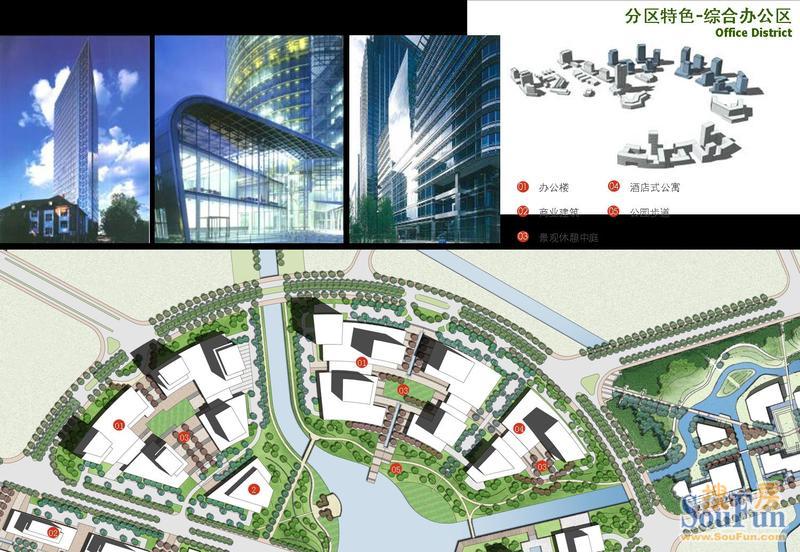
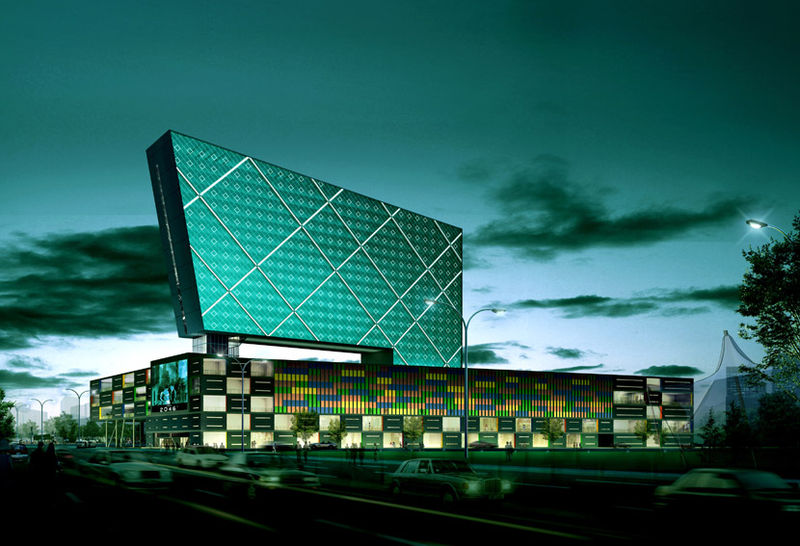
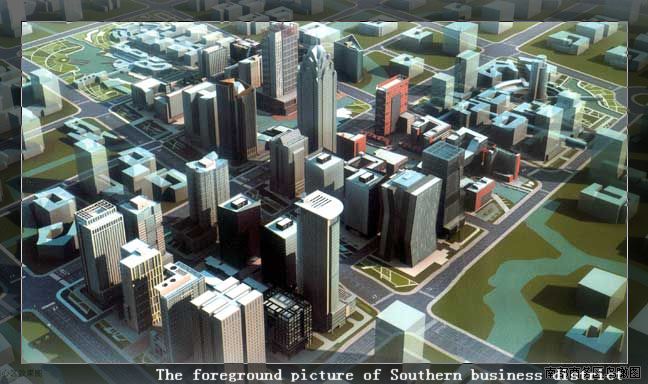
Compare to Shanghai, the advanced creative city of China, Ningbo has inadequate creative labour and market demand (Che, 2009). Creative industry in Shanghai shows characteristics of international, urbanisational and spiry (ibid). In contrast, creative industry in Ningbo is experiencing the early stage. However, Ningbo used to focus on export trade and commercial manufacture, which can become the unique feature in positioning Ningbo as creative industry and innovation undertaking base as they provide abundant economic and cultural foundations (ibid). In nowadays industrialization in Ningbo is experiencing stable increasing periods. Entering WTO brings opportunities as well as threatens to China; therefore, upgrading industries is carried out to response to the challenges (Keane 2009 & Industrial Structure of Ningbo 2008). Moreover, urbanization and industrialization supplement each other. Ningbo government plans to optimize the entire allocation and development pattern of industry (Industrial Structure of Ningbo 2008). The new strategy of urbanization of Ningbo can be summarized as “eastern extension (Dong Kuo), northern combination (Bei Lian), southern planning (Nan Tong Chou) and central upgrading (Zhong Ti Sheng)†(ibid). The core of strategy is promoting the unification of development of industry and district in order to upgrade the integrated strengthen of Ningbo (ibid). The establishment of Creative Technology Park (Chuang e Hui Gu) aims at accomplishing the transition from city-level to national -level through becoming the radiant point of regional independent creation. Additionally, the aim of establishing industrial design street is taking the advantages of Ningbo traditional industry as a reference to cultivate new distinctive district.
1.2 Rebuild Urban Structure
The establishment and improvement of clusters accommodate to the demands of urban development in Ningbo (Huang 2002). It is very important for Ningbo to develop into the economic centre of southern Yangtze River Delta as it is the hinge of traffic and economy in this area (ibid). Not only has the objective requirements of regional economic development, but also Ningbo’s own condition forces it to accelerate its pace of becoming megapolis(ibid). The central city proper of old Ningbo was very small as it assembled along the estuary of the three rivers (Liu & Wang 2004). In nowadays, the estuary of the three rivers has been experienced a tremendous transition of urban spatial structure along with the modification of Old Bund, establishment of urban planning exhibition and opening of Ningbo art gallery. As a result, the primary framework of megapolis has formed and the situation of closed urban functions has been broken down (Gao 2006).
Dr. Guo Jing (2009), the staff of Ningbo Culture and Creative Industry Base in Ningbo Institute of Technology of Zhejiang University, points out that the development of Ningbo urban space is tremendous according to its outlook of master planning. He (ibid) takes the cultural project, book city, as an example. The book city is a non-profit project which is sponsored by local government, additionally; it is located along the estuary of the three rivers, Yuyao River, Fenghua River and Yong River, where was once the location of five rice storage houses (ibid). Such a project which is enormous and invested a large amount of money is scare in the world. In addition, as Mr. Che (2009), the chairman of the director of Ningbo Creative Industry Association, introduces that the northern part of Ningbo city, Ci Cheng, is now growing its creative cluster based on its historical and cultural background. Mr. Che (ibid) emphasises Ningbo should be established as creative city for starting new business, Ci Cheng takes advantages of its outdated building and cultural heritages to explore tourism, meanwhile, there are many handiwork studios arise to contribute to create new undertaking. Mr. Gao Lingxia (2006) points out that the mode of interacting, complementing, collaborative developing among Ningbo central region and circumjacent areas is becoming the new trend of urban development.
1.3 The Deficiency in General Planning
Industrial cluster is adapted and applied by governmental planning since it is considered as a respond to solve the insufficiency of creative clusters agenda (Pratt cited in VanHeur 2009, p.14). The development of creative clusters has an interactional relationship with the general planning of urban spatial structure. On the one hand, Michael Keane (2008) considers the general planning, which is assisted by government, is the core element in deciding the success of creative clusters. Creative industry refers to the trans-boundary integration and upgrade of multi-industries (Kuang & Jiang 2008 & Keane 2008). Government assist the planning of creative space through providing tax preference and legal protection (ibid). In term of Ningbo, old planned economy still has profound effects on managing and operating system, as Mr. Che (2009) mentions that creative industry in China which lack precise and strict definition, even in Beijing, to some extent, will sweep the whole cultural industry into creative industry. Chinese officers prefer to expand the coverage of industry but pay less attention to creative clusters’ integrated ability on districts (ibid). Consequently, Mr. Che (ibid) claims that the extension of creative industry should be decreased but the contents of it should be increased.
On the other hand, in nowadays creative clusters make limited contribution to deploy urban construction despite the progress of urban restructure. Dr. Guo Jing (2009) claims that Ningbo is relatively conservational in culture field; furthermore, the propaganda of creative culture has limited impacts. For example, although the first loft of Ningbo, Loft 8 comprises many design studios, advertising companies and exhibition areas, its propaganda is too weak to integrate the spatial network of its district. Zane Zhu (2009), the host of No Space which is one of the famous design studios in Loft 8, claimed that their exhibition area has limited effect in Ningbo despite they had already successfully held many art exhibitions like paintings and photographs. Additionally, these exhibitions are non-profitable and no relation with commercial activities. Relative limited target audience and no-profitable characteristic causes Loft 8’s inadequate assembly, consequently, it has not contributed enough to urban spatial structure.
2. Effects on Urban Economic Structure
2.1 Adjust to the Operation of Urban Economic Function
Urban spatial structure is the manifestation in space of urban economic structure, consequently, to meet the needs of urban economic operation plays an important role in urban spatial upgrading and restructuring (Lin 2004). Mr. Che (2009) emphasises the growth of economic districts is suitable for the demands of urban economic operation; the positive effects on real estate by the improvement of creative clusters is one of the marked manifestation. To a certain degree the development of creative clusters interacts on the growth of real estate of Ningbo. As Mr. Che (2009) points out that there are four forms of creative clusters in Ningbo: first one is newly established industrial parks such as Creative 128 (Chuangxin 128) of Yinzhou District and Creative Technology Park (Chuang e Hui Gu) of Zhenhai District; secondly, rebuild Creative Park like loft 8 and Hefeng Creative Square which based on disused old Hefeng Cotton Mill; thirdly, commercial creative parks with government support, such as the Industrial Design Creative Street; forth, independent enterprise which leads new brand in its industry in Ningbo, such as Ningbo Tianzhiying Film, Video and Animation Corporation (see the video please cilck here). Mr. Che (ibid) emphasises that all these projects are related to real estate. Keane(2009) claims that the collaboration between real estate developers and government motivate the adaption and extension of creative clusters.
(old building of Hefeng Cotton Mill)
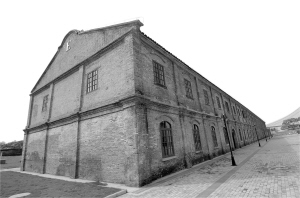
Danny Butt (2008) considers that the value of real estate arose accompany the concentration of artists. It means the entering of creative companies, the development of art activities and the gathering of creative labour contribute to increasing art value of the land (ibid). Moreover, Michael Keane (2009) claims that real estate developers could guide the concentration of creative industry, in addition, gentrification accompanies the emergence of service function for consumption, such as bars, book stores and restaurants. As a result, the used-land for this cluster will increase in value (ibid). Gentrification is a pheromone about urban space, which firstly means the upgrade of urban centre in the process of re-urbanization in western countries (Wetzel 2004). The inflow of creative population in the milieu of Design College and galleries result in the growth of service industry as the international artists require for a utility area to meet their needs for life and leisure (Keane 2009). Therefore, the commercial circulation which based on creative cluster has scabbled.
However, the development of creative industry in China, to a certain degree, is becoming the representative of real estate. As Chen Shaofeng (2008), the assistant dean of Institute for Cultural Industries of Pecking University, claims that there is a mistaken idea in the growth of creative clusters in China. He mentions creative industry is usually operated as real estate program according to governmental policy about land supervision (ibid). It leads to the transition of creative cluster from Creative Park to Real Estate Park, and weakens cultural power as well as distorts the original meaning of cultural creativity though it brings economic profits (ibid). Creative clusters seldom create new ideas; they even become image-program of government (Rossiter 2008 & Chen 2008).
2.2 The Concentration of Distinctive Industry Reform Urban Relationship
The gathering of distinctive industry would promote the rise of enterprises and the improvement of industrial dimensions (Che, 2009). The systematic industry cluster can get access to be the symbol of certain districts and form nationwide radiation (ibid). In term of Ningbo, the first newly creative development zone, Creative Technology Park (Chuang e Hui Gu) which locates in Ningbo University Park, successfully absorbs many advertising, soft ware, animation, industrial design corporations with assistance from local government. Tax preference policy, rewards for research and development motivate investment pour in creative cluster and make it have more dynamic in growth (ibid). Creative industry is related to citied industry and has characteristics of knowledge-intensive. The development of clusters results in positive transition of urban structure. In term of capital investment, it influences anthropology flow because creative industry gathers human ideas and creativities. Adrian Blackwell (2008, p. 48) mentions in today’s China there are two basic extensions mode of urban outer suburbs, which are “poorly controlled village intensification and expansive new development zonesâ€. Rossiter (2008) considers the restructure of various districts will happen in a certain scale. In some cities with development scale of creative industry, like Beijing and Shanghai, the new economic form based on urban historical heritage creates new profits, for instance 798 in Beijing and Tianzi Fang in Shanghai. This kind of urban heritage is labelled history and Chinese characteristics, moreover, they are reformed as the new artistic space for consumption. This kind of creative cluster, which is considered as “a cultural archipelagoâ€, is able to re-mode the relationship among government, enterprises, localite, academics and cultural producers (Blackwell 2008, p.48 & Keane 2009, p.221).
Improving urban distinctive industry has to form its unique industrial position. Conurbation like Beijing, Shanghai and their environed cities in China had already attached importance to industrial position. For example, Beijing has been applying itself to construct the cultural and sporty central which links folk-custom area, fashion business district and Olympic subject construction together; Tianjin, the outer city of Beijing, recurs to the abundant tourist and geographical resource of Beijing to improve urban infrastructure construction; inland cities like Chengdu and Chongqing get help from national western plan in developing creative industrial design; second-tier cities like Hangzhou and Nanjing, which are similar to Ningbo, focus on growing animation, software, design, service and real estate housing for new art creativity which based on disused factories (Keane 2009). Mr. Che (2009) considers the core power of developing industry is commercial promotion; in addition, the formation of urban distinctive industry which is also identified as one of the important system of industrial commercialization, is an economic circulation. Mr. Che (ibid) also introduces that an industrial design street in Jiangdong District is being built and it is a commercial creative park sponsored by governmental institution. Officials plan to compartmentalize an area in downtown and establish serials of separated buildings in order to form natural block (ibid). Mr. Che points out that Tian Zi Fang of Shanghai could be the successful mode for them to use as a reference according to its combination of old alleys and new creative activities, meanwhile, Tian Zi Fang directly links producing and selling as the design studios there are also the places they display their goods. In term of the Jiangdong industrial design street, the downstairs there will be the selling hall and display the products from upstairs, the design zone.
2.3 The Deficiency of Creative Clusters’ Contribution to Urban Spatial Structure
However, in Ningbo relatively mature and large-scale creative clusters have not arose in its primarily develop, which results in urban spatial structure partly registers as unsystematic and dispersive (Che, 2009). The first reason of this phenomenon is severely inadequate of talented people in creative industry. In spite of Ningbo is one of the most important manufacture base, it is weaken in self industrial design (Tang 2008). Even in famous emprises like Ningbo FOTILE Kitchen Ware Co., Ltd, there is an inadequate of professional designer (ibid). Furthermore, creative industry is considered as intellectual property which refers to brainwork of creative labour. The development of creative industry in China based on cultural fundament, including Chinese traditional culture and exotic culture. Dr. Guo Jing (2009) considers it is difficult to integrate Ningbo, such a relatively conservational city in culture, and creative industry, such an industry needs large amounts of new objects and notions. As a result, Ningbo has not finished the establishment of cultural creative industry which contributes significantly to urban spatial structure (ibid). Mr. Che (2009) claims the large-scale clusters and distinctive industry have not formed in Ningbo. Additionally, as culture account for a large proportion in China’s creative industry, Dr. Guo Jing (2009) mentions that the term culture needs a long period for being observed. Since creative industry has been experiencing early stage in Ningbo, it has not contributed much to urban spatial structure (Guo 2009 & Che 2009).
Conclusion
Creative industry has been leading the development of creative economy since its growth in 1990s. In contemporary China, where is experiencing a complicated transition in economic, urban and social areas, government places great emphasis on creative industry as it relates to the development of national soft power. Ningbo is the traffic and economic hinge of Yangtze River Delta. There is a long history of industrial manufacture in Ningbo. Economic basis, geographic condition and future urban planning require Ningbo to develop its creative industry in order to promote the increasing of economy.
Creative cluster is the geographic concentration of creative industry. Urban spatial structure means the distribution and integration in space of urban elements. It represents the spatial situation of urban economic and social structure. Creative cluster in Ningbo is now developing in the primary stage. Under the assistance of Ningbo government, there are four main forms of creative clusters, include new established creative industrial parks, loft, innovation undertaking parks and independent enterprise which leads new brand in its industry in Ningbo.
The development of Ningbo’s creative cluster interacts with the construction of urban spatial structure. On the one hand, the rise of creative clusters adjusts the districting of functional areas, reform the urban structure. On the other hand, urban general planning is the core element of deciding creative clusters succeed or not. In Ningbo, lack of creative labour and creative concept lead to creative cluster has not formed large-scale industrial parks. As a result, creative clusters have limited impact on urban spatial structure in contemporary Ningbo although it contributes to district the functional areas and reform the urban structure. However, Ningbo has potential in developing creative clusters as the support of officials and the economic situation. It is important to focus on the four forms of creative clusters in future research in order to excogitate the appropriate proposal of improving Ningbo creative industry.
References
Anas, A & Arnott, R & Small, K A 1997, Urban Spatial Structure, The University Of California Transportation Center, University Of California At Berkeley. Retrieved may 19, 2009, from http://www.uctc.net/papers/357.pdf
Blackwell, A 2008, ‘Inverting the Cultural Map: Peripheral Geographies of Beijing’s Creative Production’, Urban China vol.33, pp.48-51.
Butt, D 2008, ‘Can You Manufacture A Creative Cluster?’ Urban China. vol.33, p.33.
Carriço, Mónica; de Muynck, Bert; Rossiter, Ned (eds) 2008, [Special Issue: ‘Creative China: Counter-Mapping Creative Industries’],Urban China ,vol. 33.pp.24-25.
Che, Xiao Fang 2009, Interview, 20 May. for those who want his contact details: mobile: 13906680232
Chen, S F 2008, ‘Ten Mistaken Ideas of Creative Clusters’, China high and new technology industrial development zone, vol.3, pp.18. China Academic Journal Electronic Publishing House. 陈少锋,2008, ‘创æ„产业èšé›†å›çš„å大误区’,ä¸å›½é«˜æ–°åŒºï¼Œ2008年第3期,pp.18
Department for Culture, Media and Sport (DCMS) 2002, Creative Industries Fact File, 2-4 Cockspur Street London SW1Y 5DH. Retrieved May 19, 2009, from http://www.culture.gov.uk/PDF/ci_fact_file.pdf
Gao, L X 2006, ‘Deal with the Relationship between Urban Functions and Urban Space during the Development of Urban Centre’, Sanjiang Forum, vol.4, pp.8-11. 高å²å¤ï¼Œ2006,’å®æ³¢ä¸å¿ƒåŸŽå¸‚å‘展ä¸åŸŽå¸‚功能与空间关系处ç†â€™ï¼Œä¸‰æ±Ÿè®ºå›, 第4期,pp.8-11.
Guo, Jing 2009, Interview, 13 May. for those who want his contact details: mobile: 15867390137
Huang,X G 2002, ‘The thought for Ningbo’s developing strategy’, Urban Studies, vol. 9 no. 4, pp.62-65. 黄兴国, 2002 对å®æ³¢å‘展战略的æ€è€ƒï¼ŒåŸŽå¸‚å‘å±•ç ”ç©¶ï¼Œ9å·ï¼Œ2004年第4期,pp.62-65.
Keane, M 2008, ‘Creative Clusters: Out of Nowhere?’, Urban China, vol.33,pp.34-35
Keane, M 2009, ‘Great Adaptations: China’s Creative Clusters and New Social Contract’, Journal of Media & Cultural Studies, vol. 23, no.2, pp.221-230.
Kuang, X M & Jiang J, ‘Prologue: Created In China— Bottleneck and Breaking Through of A Great Country in Industry Transition’, Urban China, vol.33, pp.18-19.
Lin, Y J 2004, ‘The Evolution and Optimization of the Urban Spatial Form of Ningbo’, Modern City Research, vol.12, pp.53-57. 林艳å›ï¼Œ2004, å®æ³¢åŸŽå¸‚空间形æ€æ¼”å˜è¿‡ç¨‹åŠä¼˜åŒ–ç ”ç©¶ï¼ŒçŽ°ä»£åŸŽå¸‚ç ”ç©¶ï¼Œ 第12期, pp. 53-57.
Liu, F L & Wang, R Y 2004, ‘Understanding of Ningbo City’s Urban Construction’, Urban Studies, vol.11,no.3,pp.79-83. 刘å‘良&王人扬, ‘一个城市å˜è¿çš„浓墨é‡å½©â€”——å®æ³¢å¸‚城市建设解读’,城市å‘å±•ç ”ç©¶ï¼Œ11å·ï¼Œ2004年第3期,pp.79-83.
Ma, W B & Chu, J F 2009, ‘Industrial Clusters and the Upgrade of Spatial Structure in Shanghai’, China Urban Economy, vol.1, pp.51-53. 马å´æ–Œ& 褚劲风 2009,上海产业èšé›†åŒºä¸Žç©ºé—´ç»“构优化。ä¸å›½åŸŽå¸‚ç»æµŽï¼Œ2009年第一期,pp.51-53.
Ned, R 2008, ‘Informational Geographies vs. Creative Clusters’, Urban China, vol.33, pp.32.
Nie, J L & Wang Q Y2008, ‘Investigation about Current Situation of Ningbo Creative Industry and Developing Strategy’, Market Modernization, vol.561, pp.213-215. è‚晶磊 &王秋艳, 2008, ‘å®æ³¢åˆ›æ„产业现状调查与å‘展战略’, 商场现代化,总第561期,pp.213-215
Porter, M E. 1998. ‘Clusters and the new economics of competition’. Harvard Business Review, pp.77–90. Retrieved May 19, 2009, from
http://www.econ-pol.unisi.it/didattica/ecreti/Porter1998.pdf
Tang, X D2008, ‘Industrial Design and Developing Strategy of Creative Industry in Ningbo’, Private Technology and Economy in China, vol.231.no.5, pp.38-39. å”先达,2008, ‘å®æ³¢å·¥ä¸šè®¾è®¡ä¸Žåˆ›æ„产业å‘展ç–略’, ä¸å›½æ°‘è¥ç§‘技与ç»æµŽï¼Œ2008年第5期总第231期, pp.38-39.
UK in Taiwan British Trade and Cultural Office n.d., UK Creative Industry. Retrieved May 1st ,2009, from
http://ukintaiwan.fco.gov.uk/en/doing-business/business-investment-in-uk/uk-business-environment/creative-industry/
VanHeur, B 2009, The Clustering of Creative Networks: between Myth and Reality, Urban Studies, vol.46, no.9.Sage Publications Ltd.
Wetzel, T 2004, What is gentrification? Retrieved May 19, 2009, from http://www.uncanny.net/~wetzel/gentry.htm
Zhu, Z 2009, Interview, 14 May. for those who want his contact details: mobile: 13777065961,video please click here
Discuss the Situation of Creative Industry in Ningbo and how Ningbo’s Clusters Connect With Urban Development
Posted: May 31st, 2009 | Author: Shui Jing | Filed under: creative industries, theory | Tags: Ningbo CI | No Comments »Essay Title: What do the features of spatial clustering mean? Evaluating with references such as Van and Keane to discuss the situation of creative industry in Ningbo and how Ningbo’s clusters connect with urban development.
Introduction
Generally speaking, cluster phenomenon is a universal law in creative industry. It is normally depending on urban function and conveniences of the city. On one hand, city provides perfect infrastructure, cultural and entertainment facilities to enhance creative industry. Relying on these facilities city can create keen culture features to creative class, whom have received more opportunities both on career and residential environment. On the other hand, city could be more attractive and competitive depending on creative industry. Van (2009) also seems to prove this; he says that developing the creative industry cluster is the tendency to reinforce capital accumulation. It is the only way to raise urban competitive power. Scott (2000) shows that when some similar firms or companies aggregate together, they could take advantage from each others.
Historically, Ningbo is a city with 7000 year history. It has been an important seaport for foreign trade as starting point in the Silk Road of Tang Dynasty. After the Opium War, Ningbo port has been regarded as one of the trading port once again. At present, Ningbo as a developed second tier cities in China, it has been received more attention from Chinese government (on political).In addition it is also the group under The Cultural and Historic Planning which is organized by Chinese Ministry of Culture (on economics) because of its long history (Ningbo Overviews 2008).
Map of Big Ningbo
According to Wang (2009), in spite of economic crisis around world, GDP in Ningbo raised over the first quarter of 2009. Among this statistics, the primary industry has increased about 1.9%, the secondary industry has decreased nearly 3.7%.However, the tertiary industry rises 7.2% compared to same month last year in the Ningbo Daily (23 April 2009,p.1). It’s seems indicated that creative industry in Ningbo have started to play an important role due to creative industry could assume as part of tertiary industry.
Normally, the definition of creative industry is regard as intellectual property such as music, design, book and game etc. In addition, several creative services also could belong to creative industries which contain advertising, public relationship and so on (DCMS 2001).However, Che (2009)Â (video)who is the director of Ningbo Creative Industry Association holds different opinion. He says that, in Ningbo, the definition of creative industry should narrow down because of the status of Ningbo creative industry at the moment. He says, creative industry in Ningbo could be part of cultural industries and serve the Ningbo manufacturing industry. In addition, at present, Ningbo creative industry can shape up as creative industry business incubator due to the long history of go into business in Ningbo. It is quite different from the creative industry in Beijing today (Che 2009). In Beijing, creative industry seems to stand for anything, because the definition of creative industry in Beijing is expanding a lot. Usually, it connects with politics because the Beijing is the central of politic in China.
Spatial clustering of creative industries also has been highlighted during these days. It is a term from geographic sector. Nowadays, people use this term to explain that huge amounts of related enterprises, studios and organizers gather together for gaining greater competitive power.
This essay divided into three parts. Firstly, characteristic of creative industry in Ningbo will be examined by using Keane’s and Van’s references etc. In addition, some cluster of creative talents in Ningbo will be discoursed. Finally, it will state some weakness and measures of creative industry in Ningbo.
Main body
The present situation of creative clusters in Ningbo
In 2000,Ningbo government put forward a proposal named Sanjiang Culture Corridor, which included Ningbo Grand Theatre, Ningbo Concert Hall, Ningbo Museum, Ningbo Art Gallery and Ningbo Book City. At the same time, Ningbo invested nearly several millions to develop the program; and this was the first time Ningbo Government invest such huge amounts money in culture field (Cai&Guo 2008). Since 2006, Ningbo government has started to concern on creative industry (Chen 2009). It is worth notice that the Eleventh Five Year Plan from central government has promoted Ningbo government decision. This Plan points out that, Chinese government should encourage developed cities and cities with talents on creative to expand their creative industry in the range of culture, science, technology, film production, music production, fashion design, animation, games etc. Simultaneously, integrate creative contents into the traditional business. That is to say, China wants to anticipate creative industry to stimulate their service industry and manufacturing sectors. Ningbo is one of such kind of cities that exactly adapts these conditions. In 2006, Ningbo government announced a series of policies and plans. Some governmental reports from Ningbo government show that developing creative industry is urgent. Firstly, the old districts in Ningbo are unable to mark out or develop the traditional industry because of the shortage of land resources. Secondly, manufacture and foreign trade are the leading industry; if this city wants to achieve bigger competitive power they need change (Cai&Guo 2008). Wang (2006) suggests that the manufacturing advantage is lost in China gradually; people need to look for the new growth point to go ahead. And creative industry could provide with innovation and Ningbo brand. Keane (2009) seems to support this point; he says that recently under the powerful support of Chinese government, the cities may take advantage of creative industry. Some ‘value-added’ phenomena happened on renewal of traditional resources, redesign of urban space and the most crucial one is wealth creation. For example, in Ningbo, the stationery industry accounts for 70% with the number of 4000. The output value is about 50 billion RMB (Zhou 2008).However, there are nearly 80% companies are OEM. It is not a good phenomenon to develop one city. In 2003, one of stationery companies in Ningbo was named Deli Group (Their annual sales were just 300 million before 2003). Until 2004, they decided to changes from their packing design and ask for help from an industry design company in Shanghai. After five years, their sales has increased about 5 times even under attack of economic crisis their annual sales still exceed 1500 millions. It is illustrative that creative industry makes benefit to the company hugely. This also makes Ningbo government to think over the term of creative industry.
On the other hand, awareness of creative industry among the public also has been raised. For example in Ningbo, Zhoushan is a city on the island, besides the islands that residents lived; they also wish to rent rest of islands as creative industry park (Bao 2009). It is an idea which people would never concerned before, until Ningbo government treasure this issue lately. One thing which should be highlighted is that, Ningbo needs to develop these creative clusters depending on the city creative potential and advantage. Lorenzen& Frederiksen (2007) also seems to support this point, he says, economic potential should be concerned when deciding to develop creative cluster.
According to Hu (2009), small scale manufactures in Ningbo has developed very well. However, the reality is that their ability is limited due to the lack of industrial design skill. Therefore, in such situation, design studios in the creative clusters will definitely have closed relationship or location with these enterprises. In other words, small scale manufactures could benefit from design and their products appearance will be showed in creative industry park. In the end, products will get great demand. On the other hand, design studio also could demonstrate their strength and gain money through these design.
Up to May 2009, according to Ningbo Daily (25 May 2009, p.1), Ningbo government is planning to construct at least 10 creative industry parks around the Ningbo city; each district will have at least one creative industry park. At present, most of creative industry park are not completed yet. However, it can still be proved that, the rudimentary creative industry clusters are turning up now in Ningbo.
Another important phenomenon of creative industry park in Ningbo is that creative cluster is totally different from cluster in UK and Germany. In Ningbo, artists and studios get together under governmental policy but UK and German assembled by them voluntary (Van 2009).
In addition,Van also uses Maskell(2001) notes to analyze cluster and development in creative cluster, the one is that some firms are willing to relocate or partly relocate into cluster for potential customers in such area. In China, it can be seen, creative industry park functions the exact same as overseas parks. Therefore, whether this cluster phenomenon is arranged by government or not, the effects and benefits could still been forecast. For example, according to Guangming Daily one of the architectural design relocated into Loft 8 achieved 29 million yuan business volume until 2009 April (30 May 2009,p.3).
Van (2009) says, the functions from creative clusters are concentrating on real estate markets. In the other words, creative industry clusters are used to flourish this market. Additionally, Keane (2009) also divides creative clusters into three modes in China based on landed estate.
The first mode is the most common pattern around the word. That is to preserve the old factory (Keane 2009). Sometimes it is to help the bankrupted firms and sometime is just for protecting some heritage buildings. To some extent, it has not only retained historical building, but also stimulated the imagination of artists. Loft 8 in Ningbo is the vivid case to present this. Loft 8 was Ningbo Fangxiang Factory before. In 2006, this factory had been shut down; at the same time it became an enormous antique in Ningbo. For this reason, Ningbo government has decided to reform this place into creative industry park. One thing should be noticed is that Loft 8 is the first Loft form creative industry park in Ningbo (Cao&Ding 2008). Due to this, it is the first times for Ningbo to establish a creative industry park, and real estate developer of Loft 8 creates some fun. Take an example, as Fangxing Factory was constructed in 1950s, there have been many slogans on the wall of this old factory. The most representative are VIVA, Chairman Mao etc, from Culture Revolution. Developer assumed these slogans are totally useless, therefore they ask for workers to whitewash them. However, the consumers think, these slogans should be keeping back to memorize this history and could highlight studios style. Finally, Loft 8 real estate developer has to flush these covering slogans by using high pressure gun. The manager said they want pay out good-hearted but inept efforts to help. Another similar case in Ningbo includes 238 Creative Park and Sanchang Fasion Creative Block etc. They both transformed from old factories. From the point of view of Keane (2009), through the operation by real estate developers, creative cluster has embodied their real value in well organized on old buildings and city planning. It could be concluded that on one hand, transforming the old building could relieve the financial pressure from government; on the other hand, it also improves regional economic benefit.

Ningbo Loft 8
One of slogan in Loft 8
The second mode is the creative industry parks which are constructed with completely new (Keane (2009). Generally, it is driven by government policy in China. This mode is also extremely wide spreading in Ningbo. Take 128 Innovation Valley for example. Government wants to draw on the experience from Boston Route 128 (Actually, I don’t think Boston Route 128 is a good name and experience for this innovation valley, because Boston Route 128 was downfall many years).This innovation valley is funded by an Australian company nearly thirty million dollars. Nowadays the first stage construction of 128 Innovation Valley has been finished and 27 enterprises have moved into this innovation valley. Some Ningbo News reports that the 128 Innovation Valley will be a base for creative industry, industrial design and technology incubator.
The last cluster mode is that some creative industry parks close to the university (Keane 2009). That is also the reason why the central of software industry is in the Ningbo Zhenhai district. Plenty of universities are located there such as Ningbo University, Ningbo Engineering Institute and Ningbo Textile Engineering Institute. Zhenhai district owns the biggest software base named Innovation Valley .
Innovation Planning
The last cluster mode is that some creative industry parks close to the university (Keane 2009). That is also the reason why the central of software industry is in the Ningbo Zhenhai district. Plenty of universities are located there such as Ningbo University, Ningbo Engineering Institute and Ningbo Textile Engineering Institute. Zhenhai district owns the biggest software base named Innovation Valley. According to Ningbo government’s work report, the first-stage construction of Innovation Valley includes three sectors. They are Science Tour, East China Software Outsourcing Service Base and Innovation Valley Research and Development Building. The second phase of the project consists of Software Department of Peking University Ningbo Branch and Northern Europe Industry Park etc. Until now, some international enterprises have entered into this park, such as Det Norske Veritas and IQSS etc. Government report also illustrates that the cluster effects were revealed obviously in 2008.Innovation Valley has achieved output value about RMB 14.17 billion because of the cluster management. Furthermore, it is clearly that Ningbo government pays huge attention to industrial design and software. At present, they also exploit animation industry in Beilun district under the government’s support to industrial design and soft ware. As is known to all that Beilun is one of the important harbours in the world. However, it seems that this district is short of economic growth mode except of this port. Ningbo Vocational and Technical College in Beilun district has started to corporate with famous companies and Shanghai Animation Film Studio to develop animation industry and already get great achievements. Ningbo Daily states that the profits from animation outsourcing service reached to the 900 million yuan until 2009 April (2 May 2009 p.4).
Besides these three types, one thing should be noticed is that, normally, most of creative clusters not only include studio but also include some service companies’ service for the exhibitions and business transactions from artists themselves (Maskell 2001). For example, in Loft 8, studio named No Space is such a company concentrating on both design and exhibition. Yao (2009) says they put up a perfect bridge between artists and art collectors. They try to use their professional knowledge to help provider and customer. Furthermore, urban development enchased the floating of capital, talents and technologies. Those essential factors finally shaped spatial aggregation and made greater benefits.
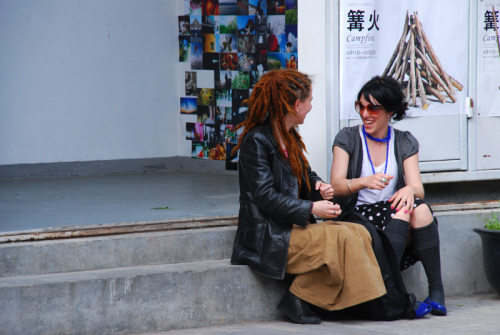
One of photography show in No Space
This new creative industry park in Ningbo will be set up in next two years(by using container)
The present situation of creative talents cluster in Ningbo
However, one of the most important elements in creative industry is the creative talents. Demand of creative industry can meet only if the talents gather. Meanwhile, creative talents can be regarded as human capital and also can be explained in cluster (Florida 2008). There are lots of evidences of the advantages of talent agglomeration. As Keane (2008) maintains that talent element plays an important role in creative industry. Ningbo as a second tier city; it should form more activities to attracted professionals. Recently, they try to use higher salary than other big cities in China to attract talents from the world. According to the report from Ningbo Administration of Industry and Commerce. Ningbo has taken part in huge of exhibitions such as China Creative Industry Exhibition etc to promote themselves frequently. On the other hand, Ningbo holds Creative Industry Design Exhibition to raise their prestige. Another approach used by Ningbo government is to training the talents rely on their education system or ask for help from advanced company or nations. At the moment, they decided to anticipate some companies to give technical staff a number of professional trainings to enhancing their knowledge. Until now, they carried out trainings for 4 times for 400 trained staff. (Develop Jiangdong district creative economy 2009). Take example, one of animation companies in Ningbo has signed a contract with Korea Sogang University which provides advanced animation skill to train staff from Ningbo Company’s animation technology (Shen 2007). In addition, Chinese Film Branch at Ningbo Beilun district also sets up a CG College to educate more people move towards animation field (Beilun Development and Reform Bureau 2009). On the other hand, in order to cultivate creative industry talents, some professional educational institutions have provided plenty of majors and course to perfect this industry in Ningbo. For example, Ningbo Institute of Technology-Zhejiang University has established culture and creative industry major. Software Department of Ningbo Dahongying University has opened animation course and corporated with some creative industry parks as well (Yan 2009). Ningbo Engineering Institute starts to enhance the industry design relying on their professional knowledge.
Some problems in Ningbo Creative cluster
As the present situation of creative cluster in Ningbo, Nie&Wang (2008) analyze four aspects of problems that exist in Ningbo creative industry. First one is unbalanced development between business and culture. This problem is embodied on conceptual aspect. Secondly, management confusion, this is a problem belonging to government system. Thirdly, creative industry is lacking of policy to support, such as tax revenues and government grants. Finally, badly lacking in professional designers and mangers.
I would like to add some thought from personal view. The first problem of Ningbo creative clusters is that the position of these creative industry parks is unclear. Most of them share exactly the same function and don’t appear unique character. Every district governments in Ningbo seem to compete with each other. For example, The Third Faison Industry Design Block, Industry Design Street etc have the same functions which are focusing on industry design sector. It is not only causes waste of resources also cut-throat competition due to so many companies at the same level.
And the other problem is that most of existing creative cluster are still in primary stage in Ningbo. Nevertheless, constructing those creative industry parks is just a consciousness. Those creative clusters are short of product chain, industry chain and financing chain. For example, Letu Pottery Studio in Loft 8.Although is the earliest company move into Loft 8, they carry out their first public activity until this year.
Sassen(2001) presents that, the development perspectives of one city and its international prestige determines the national’s power and development space around the world. In the other words, city images could decide the fate of one nation. So that, Ningbo should consider seriously instead of competing with other to develop it own creative industry cluster. Soft power and economy are important function in the process.
Conclusion
In conclusion, Ningbo’s creative cluster shares the same characteristic as the other industry clusters have. However, creative cluster depends on talent factor largely as well as the demand of social capital. Historically, Ningbo is a city with long history in culture. Nowadays, Ningbo is a harbour city international port and well-developed on manufacturing industry. However, these characters and advantages not perform very well in creative industry sector. Therefore, they also restrict further urban development in Ningbo. The positive thing is that, the geography of creative cluster in Ningbo has revealed the general rule. Old factories, old storehouses are located in the old districts, such as Jiangdong district and Haishu district. In addition, High Technology Creative Park is near the university circle due to the resources from these universities. Completely new creative industry parks be located in new district. In this essay, firstly, the environment, culture and government policy in Ningbo were presented. Then, the talent factor was highlighted in Ningbo creative industry. Ningbo government has noticed this problem and tried to corporate with some companies and build some related education system of service for Ningbo’s creative industry. It could be proved that, city’s character should take into consideration and this also determines the city to choose which kind of creative industry. Meanwhile, the function of creative cluster is determined by creative industry of this city. At the end of article, some weakness and thoughts of Ningbo creative industry has been brought forward. It is clear that, Ningbo need to pay huge attention to policy, talent and planning to develop creative industry. Futhermore, the most important thing is that gives up the competition but for do research carefully and use its advantage completely.
References
Bao,Yong 2009, Island Project in Zhoushan, Retrieved 15 May,2009,from http://news.xinmin.cn/rollnews/2009/05/21/1989184.html. 包勇 2009, 舟山连岛工程预计å月底全线贯通, æ¥æºäºŽ2009 5月15æ—¥http://news.xinmin.cn/rollnews/2009/05/21/1989184.html\
Beilun Development and Reform Bureau 2009 , Animation industry in Beilun district. Retrieved 15 May, 2009, from http://www.nbec.gov.cn/newsBrowes/zhengCe/detail.jsp?id=27925北仑区å‘改局 2009, 北仑区动漫产业å‘展åŽåŠ²å足, æ¥æºäºŽ2009å¹´ 5月15http://www.nbec.gov.cn/newsBrowes/zhengCe/detail.jsp?id=27925
Cai,han&Guo,Jian 2008, 30 years culture development in Ningbo,Zhejing People Public Press,Hangzhou. 蔡罕,éƒé‰´ 2008,å®æ³¢æ–‡åŒ–å‘展三å年,浙江人民出版社,æå·ž
Cao,Yanping&Ding,Xiaohong 2008,The first Loft in Ningbo , Retrieved 15 May,2009,from http://news.zj.com/detail/900069.html. 曹燕èå’Œä¸æ™“虹 2008,上世纪的旧厂房å˜æˆå®æ³¢é¦–个LOFT创æ„å›ï¼Œæ¥æºäºŽ2009 5月15æ—¥http://news.zj.com/detail/900069.html
Che, Xiao Fang 2009. Interview, 20 May.
DCMS 2001, Creative Industries Mapping Document 2001, Retrieved 15 May, 2009, from http://www.culture.gov.uk/reference_library/publications/4632.aspx
Develop Jiangdong district creative economy 2009, Retrieved 15 May, 2009, from http://www.nbaic.gov.cn/art/2009/3/24/art_44_11583.html
Florida, R 2008, Who’s Your City? How the Creative Economy Is Making Where You Live the Most Important Decision of Your Life, Random House of Canada, Canada.
Hu, Haizhong & Xiao Yingzhe 2009, ‘On interactive relationship between Ningbo constructing industrial park and developing small-medium scale manufactures’, Journal of Zhejiang Wanli University,vol.22,no.1,pp.83-86.
Keane, M 2008, ‘Creative Clusters: Out of Nowhere?’ Urban China, vol.33,pp.34-35
Keane,M 2009, ‘Great adaptations: China’s creative clusters and the new social contract’, Journal of Media &Cultural Studies,vol.23,no.2,pp.221-230.
Lorenzen,M&Frederiksen,L2007,‘Why do cultural industries cluster? Localization ,urbanization, products and projects.’,in Cooke,H& Lazzeretti,L (eds), Creative cities, cultural clusters and local economic development, Edward Elgar Publishing,UK,pp.155-179.
Maskell, P 2001, Towards a Knowledge-Based Theory of the Geographical Cluster, Industrial and Corporate Change 10(4), pp. 921-943.
Nie, Jinglei& Wang,Qiuyan 2008 The Survey on Current Situation of Creative Industry and Development Stratagem in Ningbo. Journal of Market Modernization,Vol.561, no.12,pp.213-215.
Ningbo overview 2008.Retrieved May 20, 2009, from http://english.ningbo.gov.cn/col/col55/index.html
Sassen,S 2001 ,The global city, Princeton University Press,USA.
Scott, A 2000, The cultural economy of cities, SAGE,London.
Shen,Zaohui 2007 Ningbo cooperate with Korea university for animation industry. Retrieved 15 May, 2009, from http://epaper.cnnb.com.cn/nbrb/20071208/index.html沈æœæ™–2007, 我市引入韩国西江大å¦åŸ¹å…»åŠ¨æ¼«äººæ‰æ¥æºäºŽ2009 å¹´5月15æ—¥http://epaper.cnnb.com.cn/nbrb/20071208/index.html
Van Heur, Bas 2009 ‘The Clustering of Creative Networks: Between Myth and Reality’, Urban Studies 46.9.
Wang,Jici 2006,Some thought about creative clusters, Retrieved 15 May,2009,from http://www.zjol.com.cn/gb/node2/node138665/node257861/node275665/node275666/node275669/userobject15ai3855578.html. 王缉慈2006,创æ„产业集群的价值æ€è€ƒï¼Œæ¥æºäºŽ2009å¹´5月15æ—¥http://www.zjol.com.cn/gb/node2/node138665/node257861/node275665/node275666/node275669/userobject15ai3855578.html\
Yan,Hongfeng 2009,Culture industry in Ningbo Retrieved 18 May, 2009, from http://www.gmw.cn/01gmrb/2009-03/30/content_903173.htm. 严红枫 2009, å®æ³¢ï¼šæ–‡åŒ–产业逆势上扬呈新亮点,æ¥æºäºŽ2009å¹´5月http://www.gmw.cn/01gmrb/2009-03/30/content_903173.htm.
Yao, Pu 2009. Interview, 6 March.
Zhou,Zhao 2008, Ningbo stationery industry in the boom year, Retrieved 15 May,2009,from http://news.brandcn.com/hypp/wj/200811/164235.htmlå‘¨æ˜ 2008 ,å®æ³¢æ–‡å…·äº§ä¸šåœˆçš„崛起åŠå…¶åœ°ä½ ,æ¥æºäºŽ2009 5月15æ—¥http://news.brandcn.com/hypp/wj/200811/164235.html
Documentary Summary: Changes of Our Understanding of Creative Industry
Posted: May 22nd, 2009 | Author: Fu Hanqing | Filed under: creative industries, video | Tags: creative industry, Ningbo, Understanding | Comments Off on Documentary Summary: Changes of Our Understanding of Creative IndustryMy document is not about the specific contents of creative industry but about the change of our comprehension of it. Actually, by discussing in the classes and researching in the field, our understanding of creative industry has undergone conversations from narrow ones to comprehensive ones.
At the beginning of the course, we totally cannot find the relationship between creative industry and other areas, like real-estate, waste industry and maritime industry. Our understanding of creative industry was limited to the field of design. In our established thinking, creation always related to the production design, and the creative industry was merely lots of creative companies gathered in industrial parks or lofts. By directing with these thought, we chose creative industry parks in Shanghai and Loft 8 in Ningbo as our first places for researching. We wanted to study the present conditions and future development trends by comparing the differences of creative industry in these two cities.
The research in Shanghai offered us other angles of vision about creative industry. We began to know that both the words of ‘creative’ and ‘industry’ should be paid more attentions when we researched in Ningbo. So, we took an interview with a scholar in the office of creative industry in Technology University in Ningbo. By talking with the experts, on one hand, we got information of the condition of creative industry in Ningbo. On the other hand, we found that Chinese scholars may notice the relationship between creative industry and culture, but ignore the position of creative industry in the whole urban network.
After getting knowledge from the classes and seminars, we began to think about the position of creative industry in urban network, and do field work in relevant industries, such as waste industry and maritime industry, which are the important parts of urban network. Latter we have done an interview with the president of creative industry association of Ningbo. He introduced the whole development modes of creative industry in Ningbo. And he also mentioned other problems closely related to the development of creative industry, such as the increase of house estate prices and the construction of supporting facilities of creative industry, although he did not explain deeply. With his comprehensive introduce and our field works in different areas related to the creative industry, our understanding of creative industry is no longer as limited as before.
In conclusion, Ningbo has owned its development modes of creative industry. Under the government’s plan, creative industry areas and their supporting facilities are also established. However, in this stage, because of a lack of a whole industry chain, the positioning of creative industry in Ningbo is considered as to serve the foreign trade and manufacturing industry, and to be the venturing bases of creative industry itself. Like other cities in China, the development of creative industry leads some problems. For example, the prices of house located near the creative industry parks increases and more waste brought from creative industry need to be disposed scientifically.
There are many more problems related to the creative industry in Ningbo. So, more studies should be done by researchers who are interested in this topic in the future.
Documentary summary: creative clusters and urban spatial structure in Ningbo
Posted: May 22nd, 2009 | Author: Xu Shengxi | Filed under: creative industries, video | Tags: creative cluster, creative industry, urban spatial structure | No Comments »Compare to Shanghai, Beijing and Shenzhen where a relatively mature development of creative industry has, Ningbo is experiencing the early stage. Ningbo mainly has four forms of creative clusters.
1. New established industrial park such as Chuangxin 128 of Yinzhou district and Chuang E Hui Gu (Creative Technology Park) of Zhenhai district;
2. Rebuild Creative Park like loft 8 and Hefeng creative square which based on disused old Hefeng cotton mill;
3. Commercial creative park with government support, for instance the Industrial Design Creative Street;
4. Independent enterprise which leads new brand in its industry in Ningbo, like Ningbo Tianzhiying Film, Video and Animation Corporation.
On the one hand, the rise of creative clusters contributes to tinker up the distribution of urban functional districts. Ningbo used to focus on export trade and commercial manufacture. Creative industry is related to citied industry and has characteristics of knowledge-intensive.
Moreover, it has positive effects in contributing to urban functions according to the increasing of creative clusters.
1. Urban economic functional districts will generate from the increasing of creative clusters. Such as the emergence of starred hotels and shopping mall which appropriate for the demands of urban economic operation.
2. Distinctive Industry assemble brings upgrade of enterprise and industrial scale. It is systematic but not dispersive. Once the clusters come into being it will become the symbol of local creative industry and radiate to a national scale. However, large-scale industrial clusters has not generated yet but being attempted.
3. The core power of developing industry is commercial promotion. Even Hollywood has to depend on its commercial operation to achieve global attention. Urban distinctive Industry is an important system of industrial commercialization.
Although in nowadays it has limited relationship with deploying urban construction, Ningbo creative industry aims at becoming a brand new creative incubator for doing own business.
See the video please click here
Nostalgic creativity –Documentary summery
Posted: May 15th, 2009 | Author: Vicky | Filed under: creative industries, video | Tags: tourism | No Comments »Ci Cheng is Ancient town in the North of Ningbo with 2000 years history. It is the oldest county and best preserved in the south of China. I t maintains old chessboard pattern the same as the capital in Tang Dynasty. With the abundant of age-old history and rich cultural heritage, Ningbo government posits Ci Cheng as the key site for developing tourism and cultural industry.
A combination of heritage and the concept DIY creates the only one DIY leisure land in China-CC CITY DIY Studio. Do it by your self, this classical art craft provides consumers with products of experience and achievement. The combination of culture and creativity produce considerable economy value. Local people get more news jobs. And this also attracts many traditions manufactories joining this project and seeking for new business opportunity to upgrade brand image.
However, local government had spent 8 billions on this project, but did not gain the expect popularity. And they might fall into the difficult between developing tourism and preserving heritage.
click here  nostalgic trip
Give Our Eyes a Trip
Posted: May 8th, 2009 | Author: Shui Jing | Filed under: creative industries, real-estate, theory, video | Tags: 1933, Shanghai, Slaughterhouse | No Comments »This is a clip of 1933 in Shanghai
Useful Information
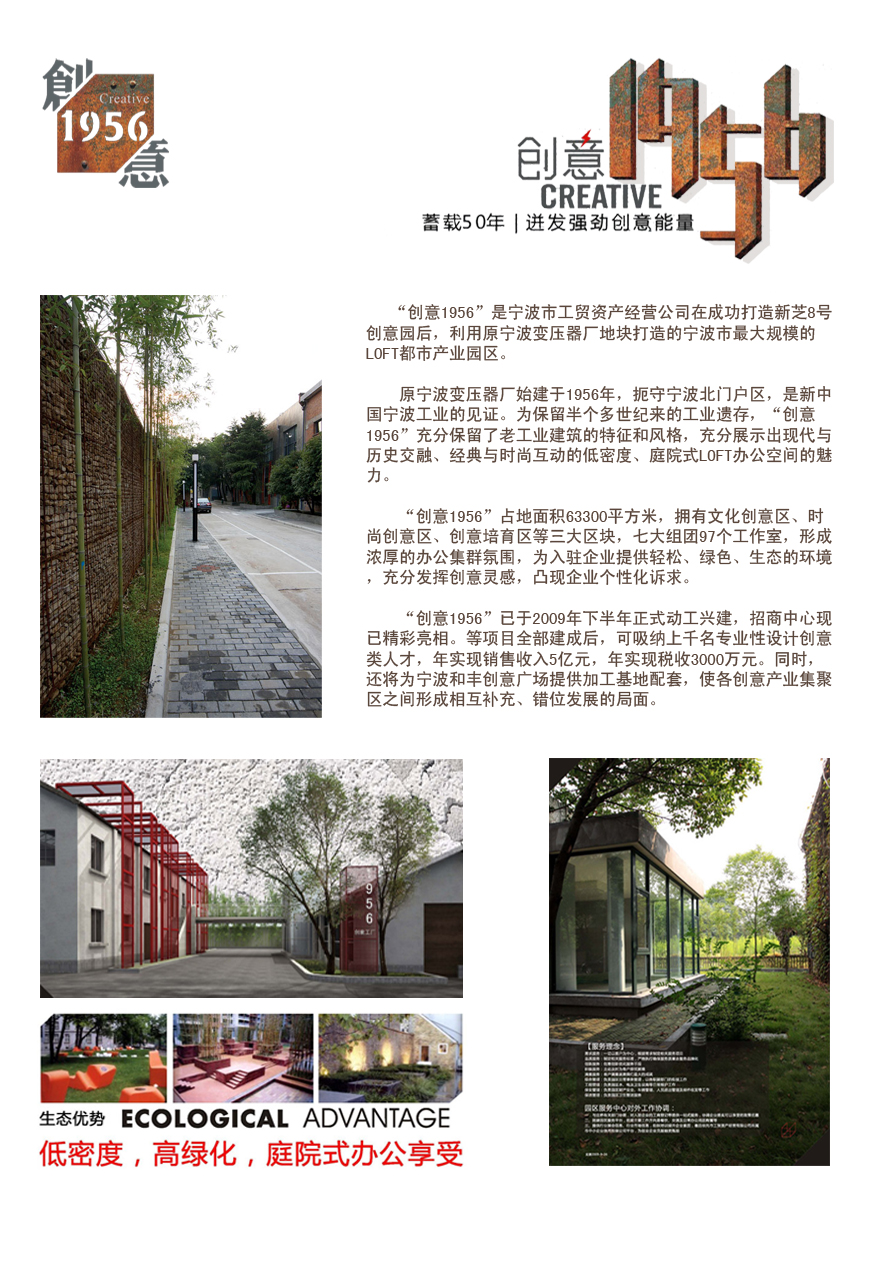

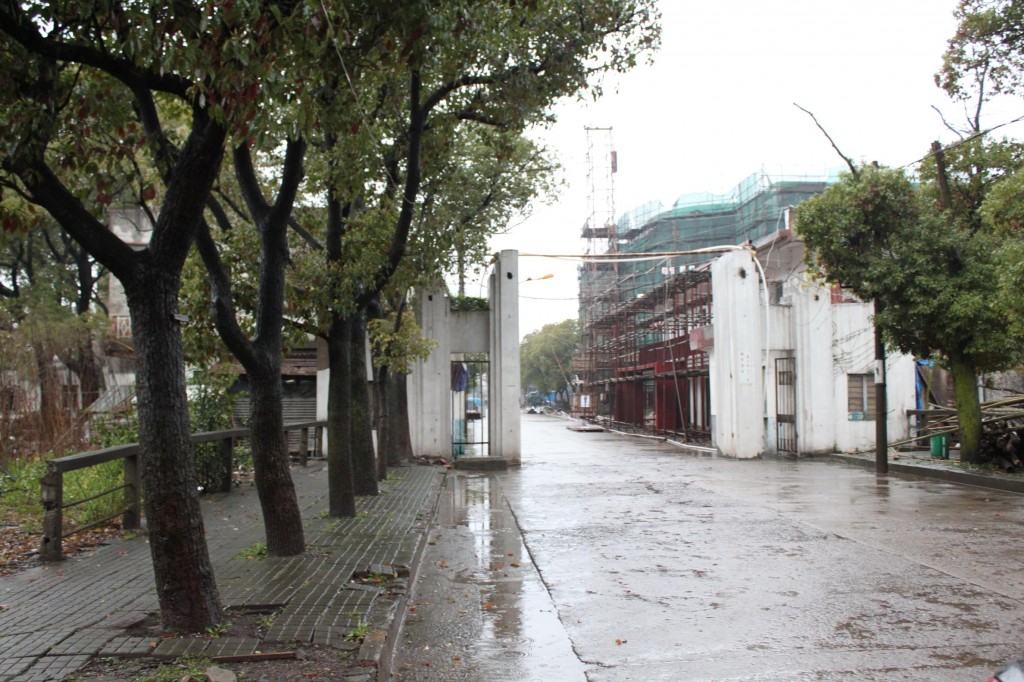
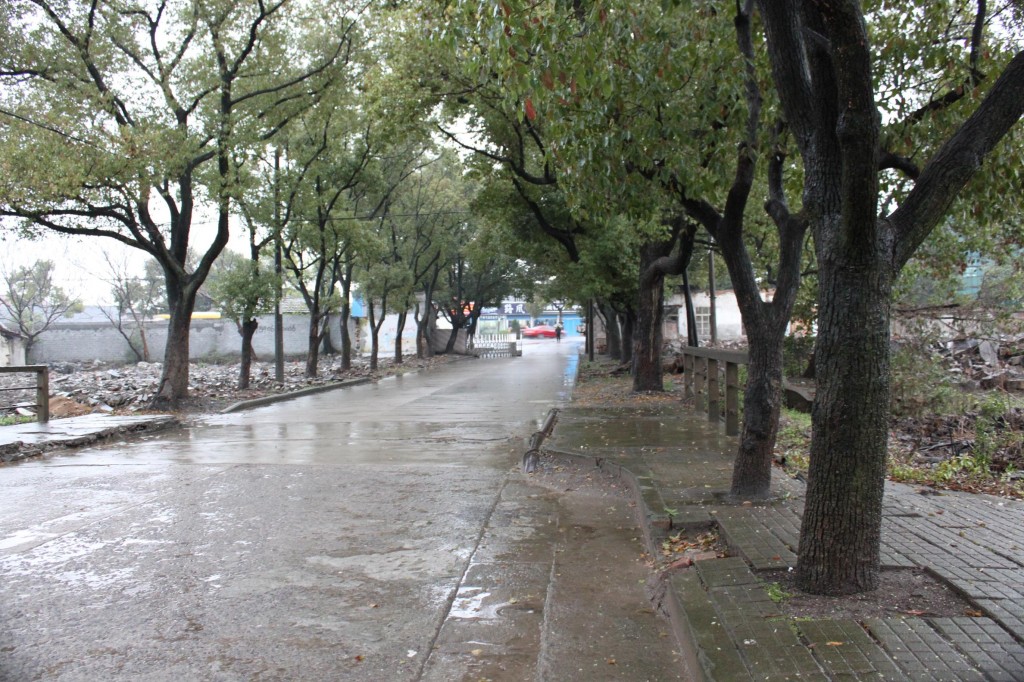

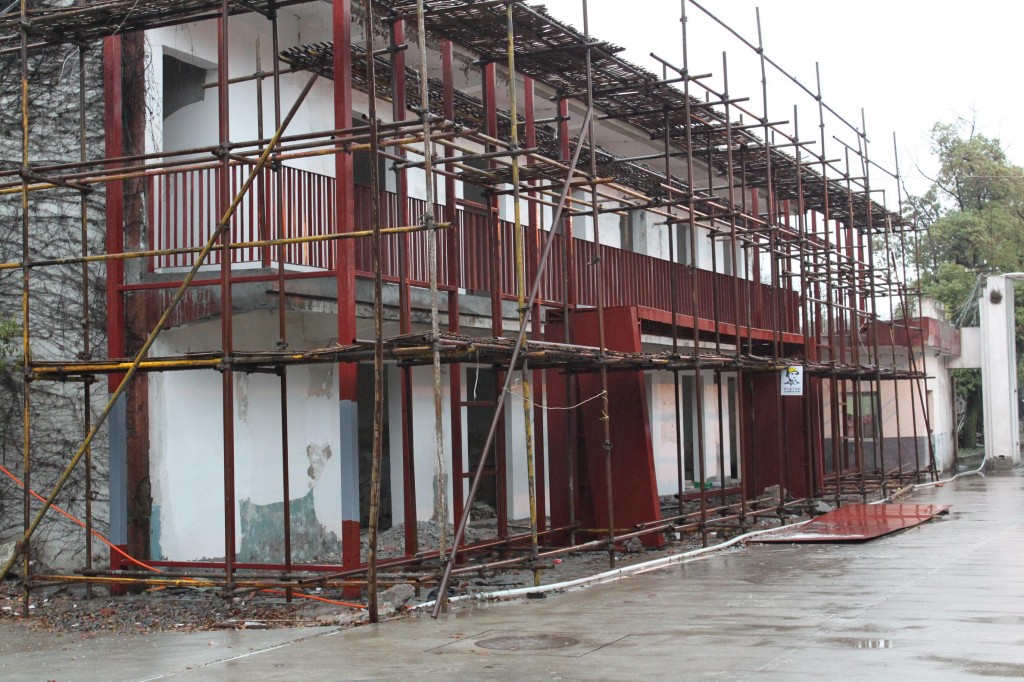
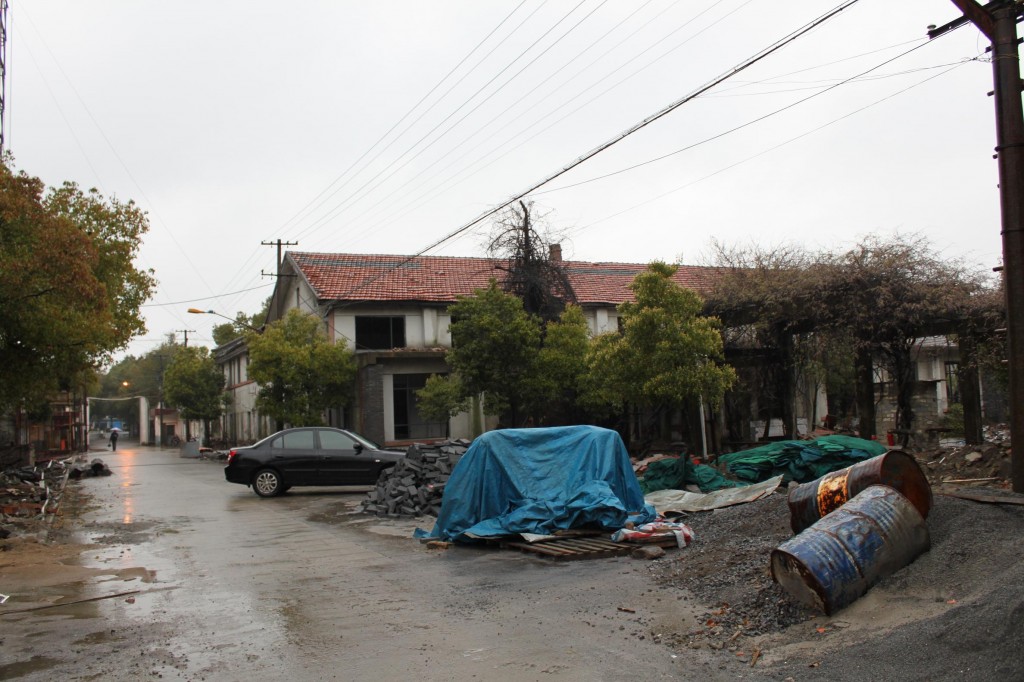
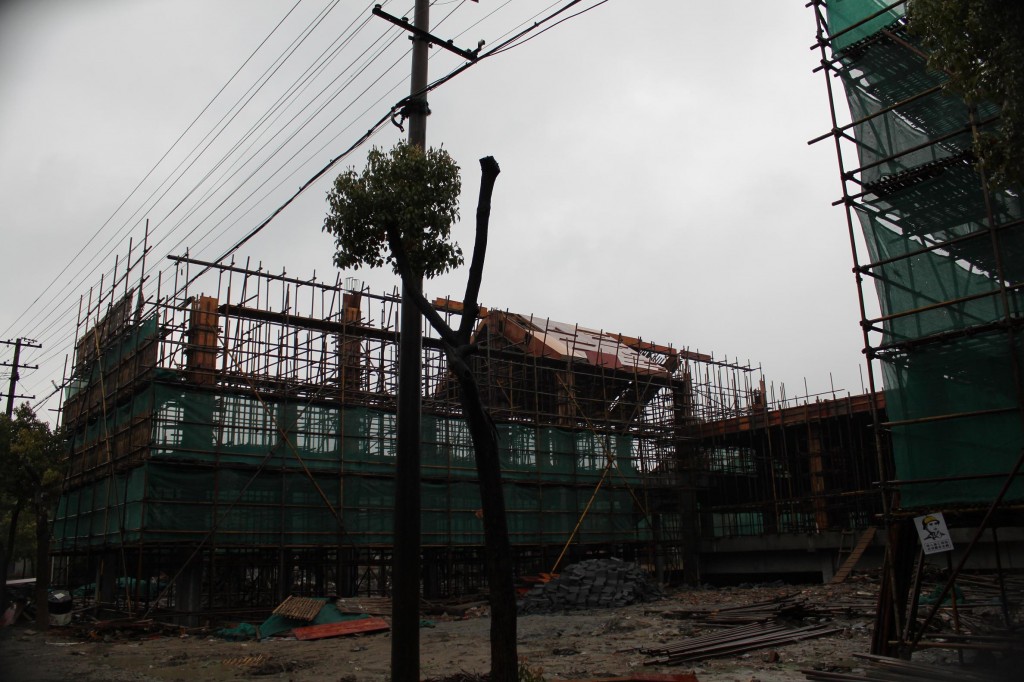
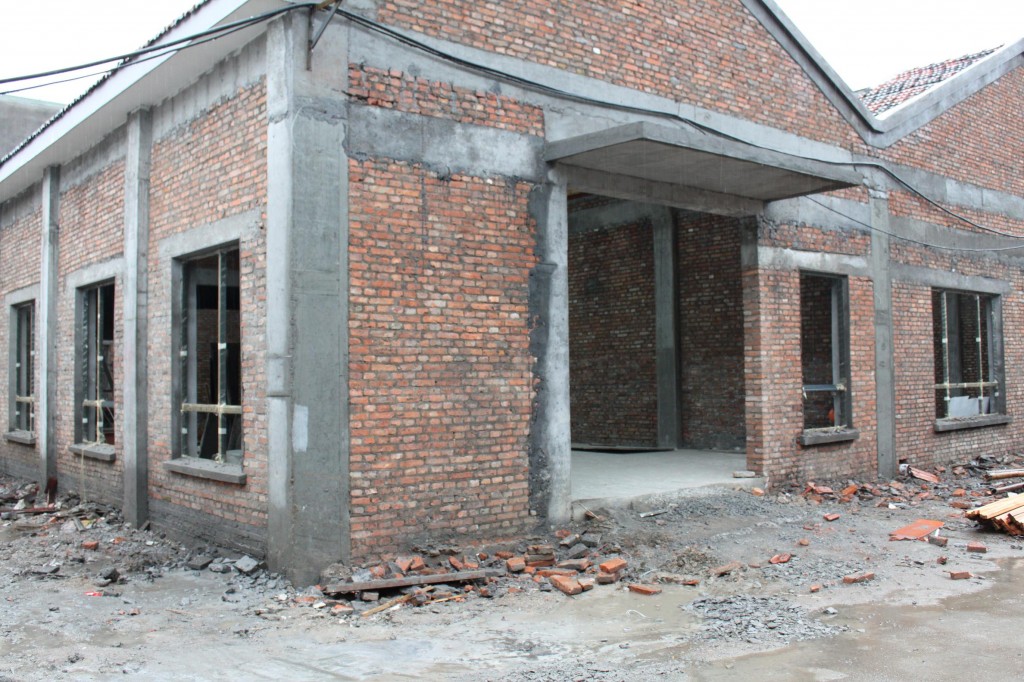
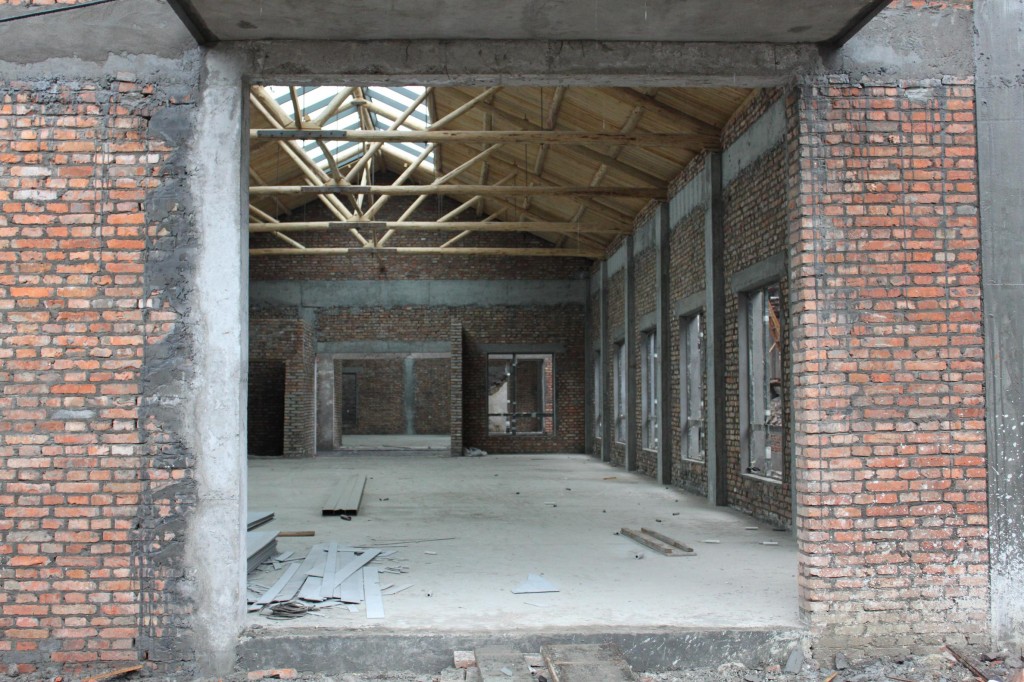
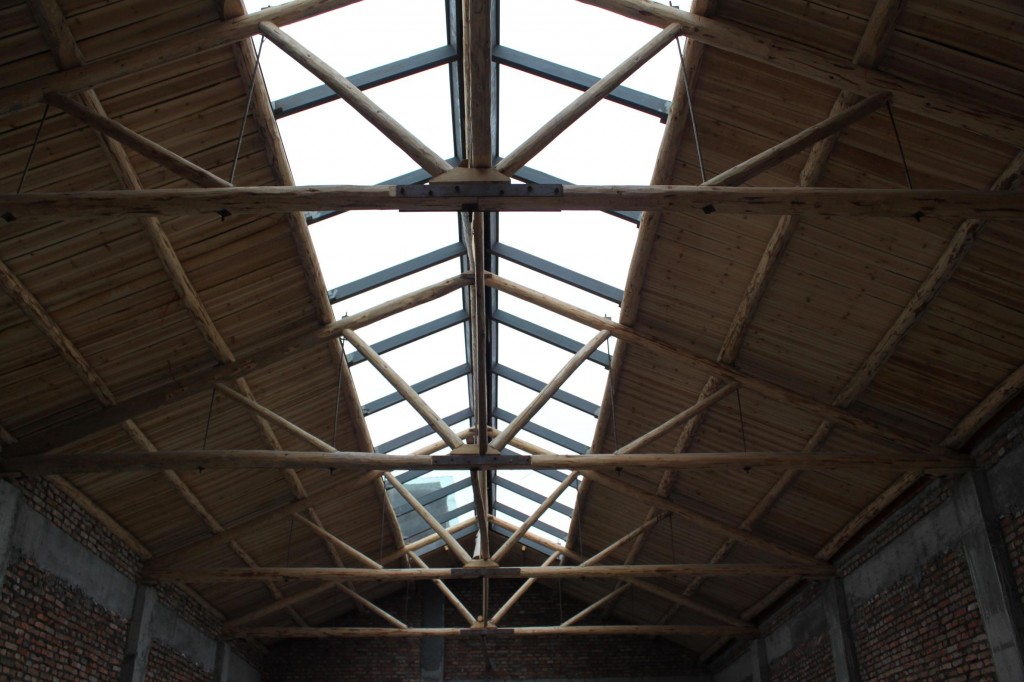
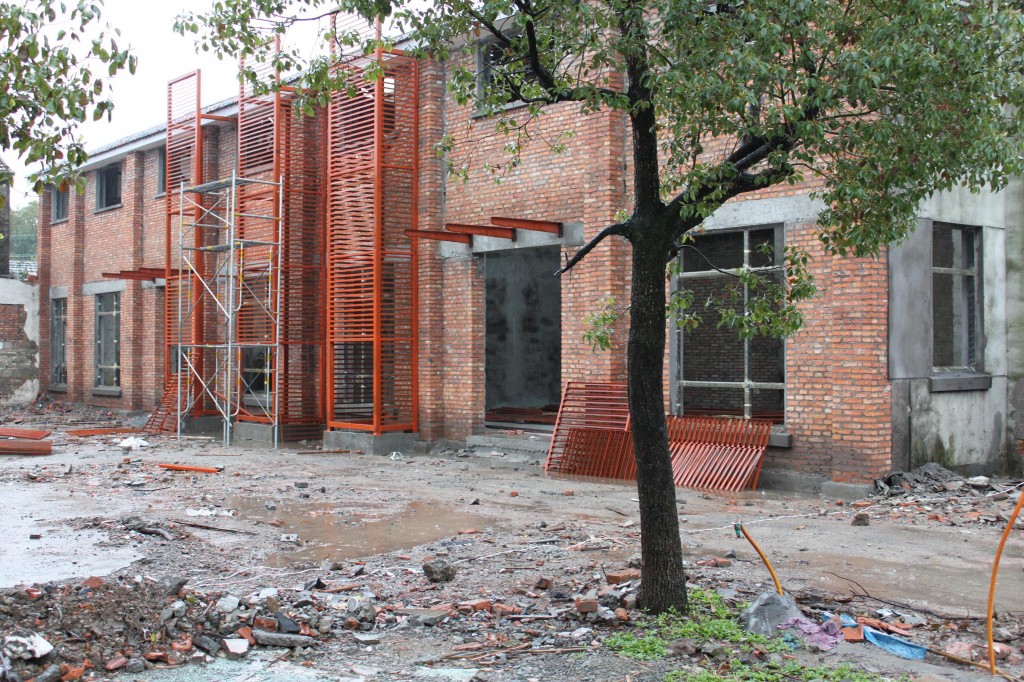
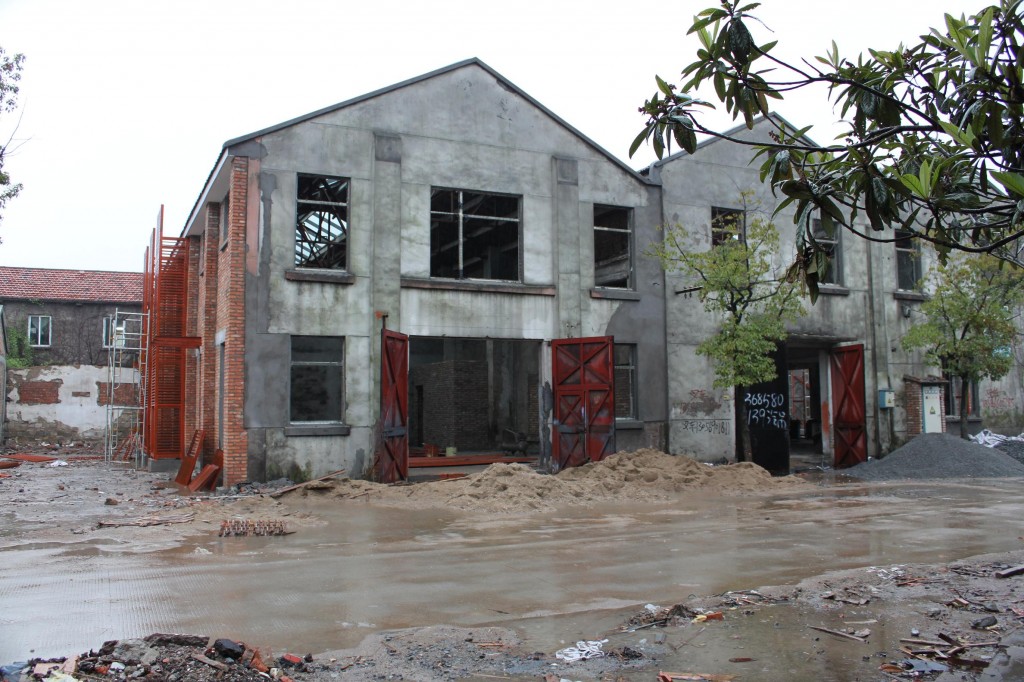
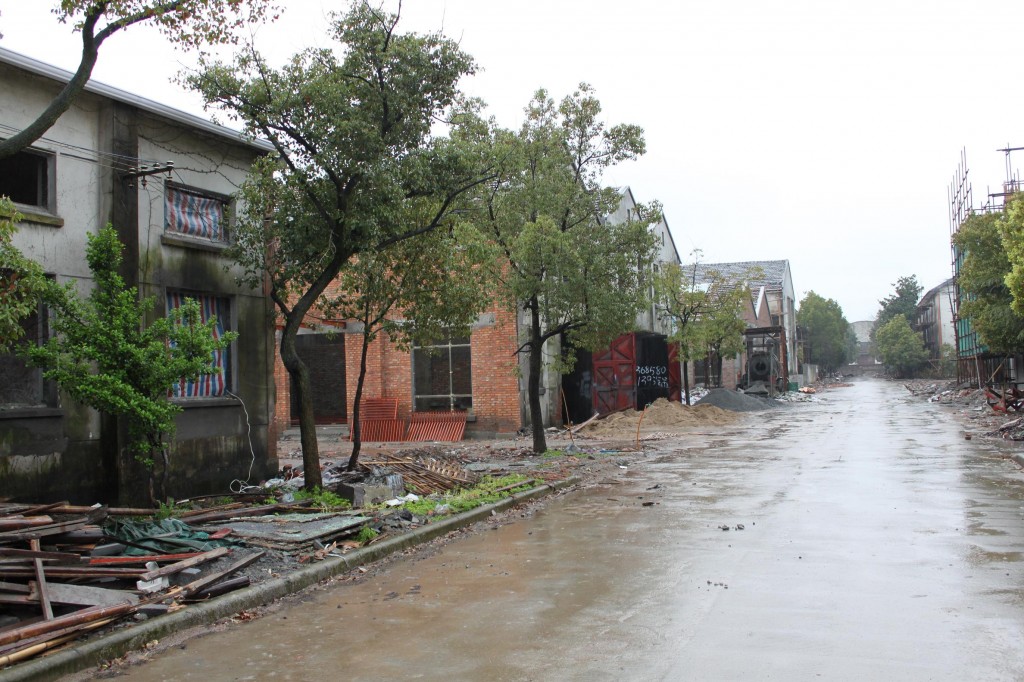
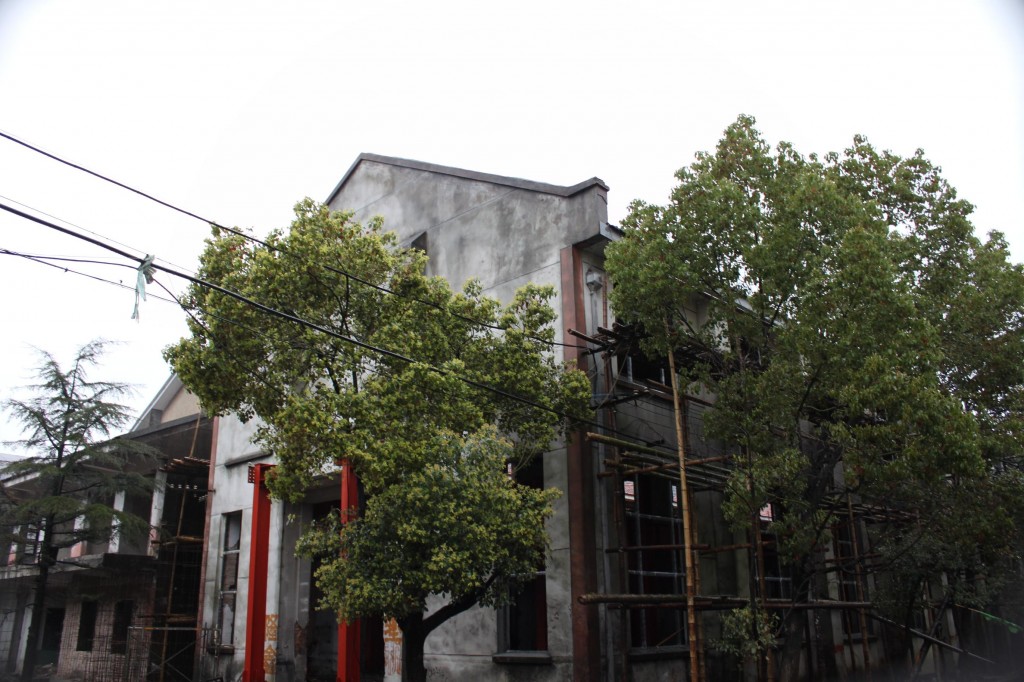
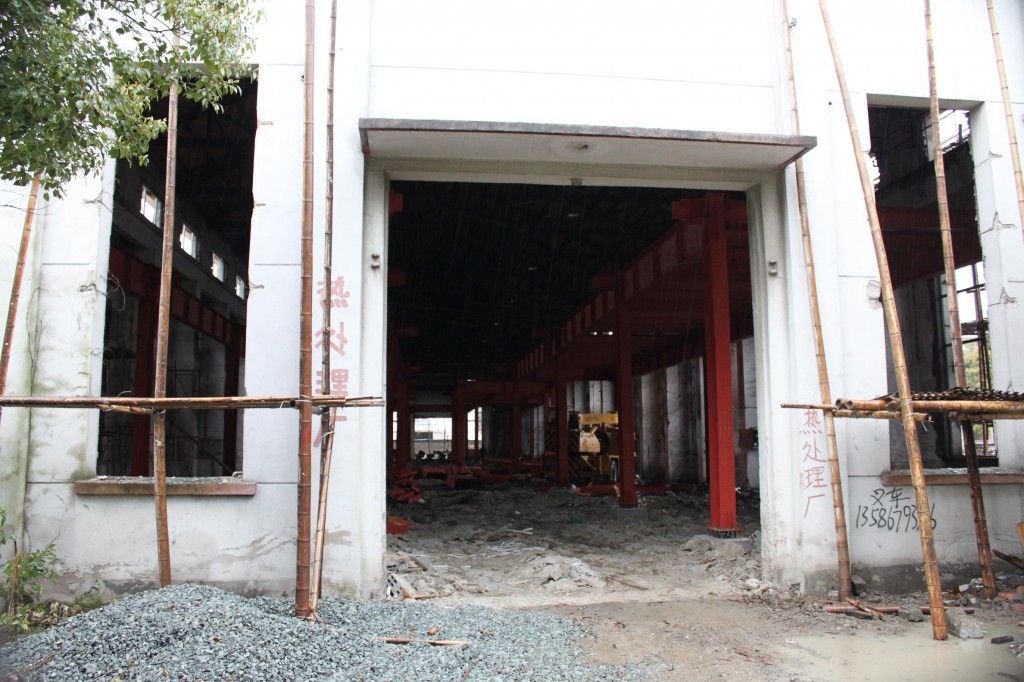
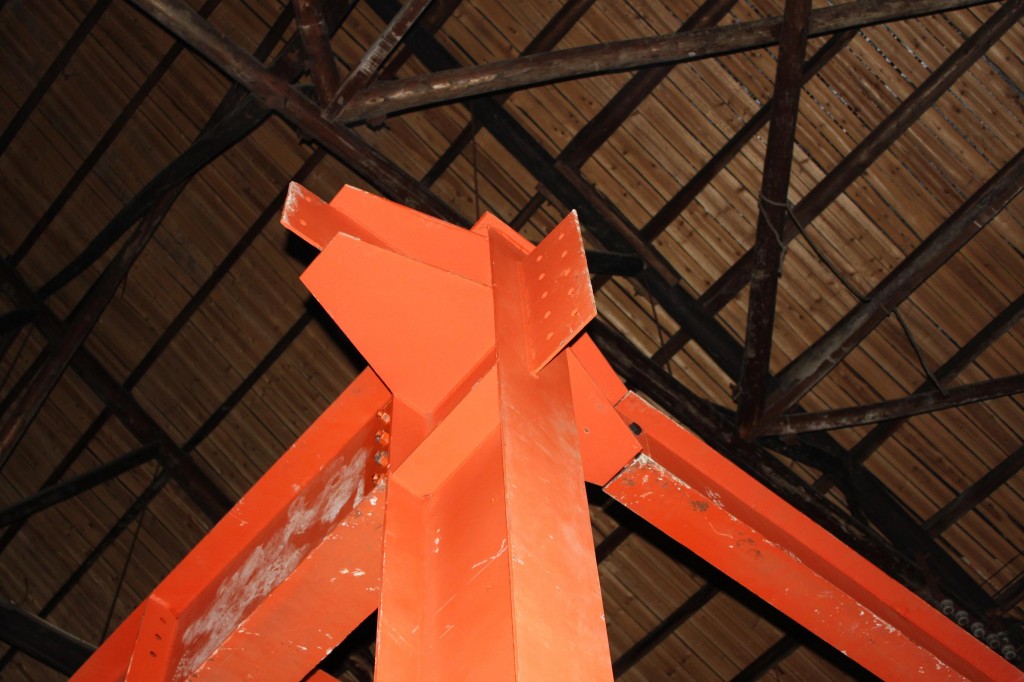
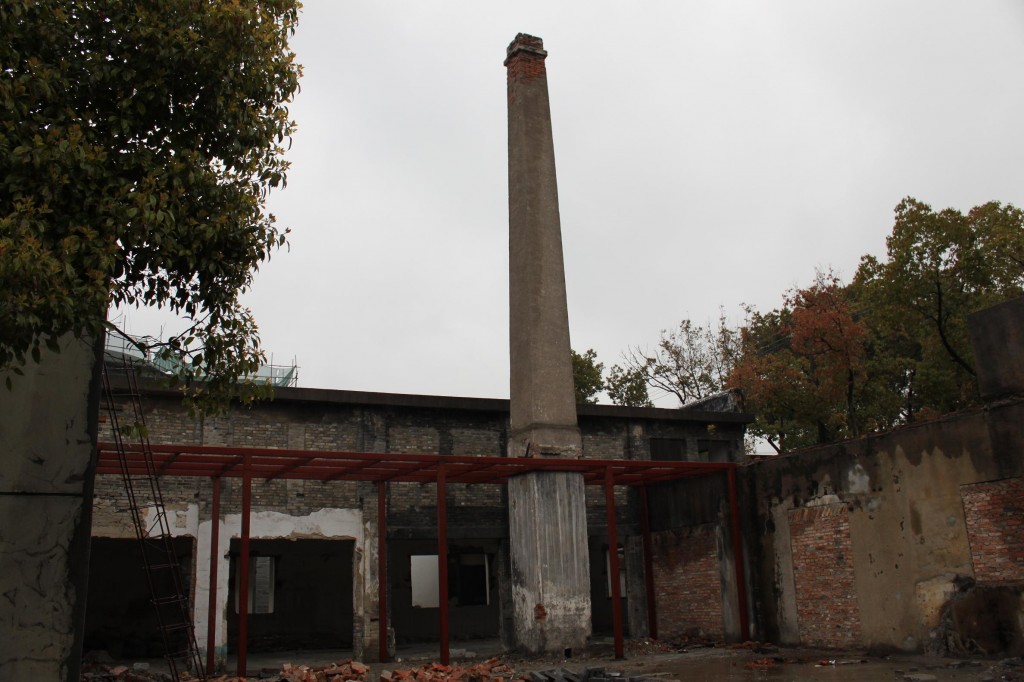
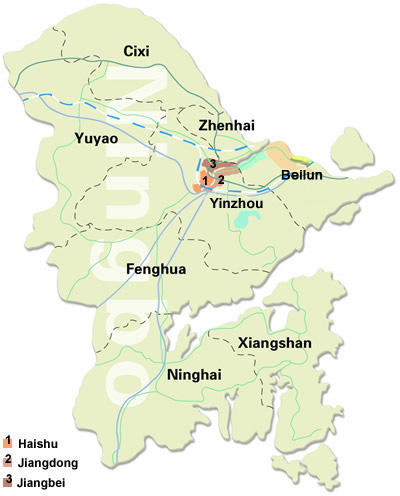
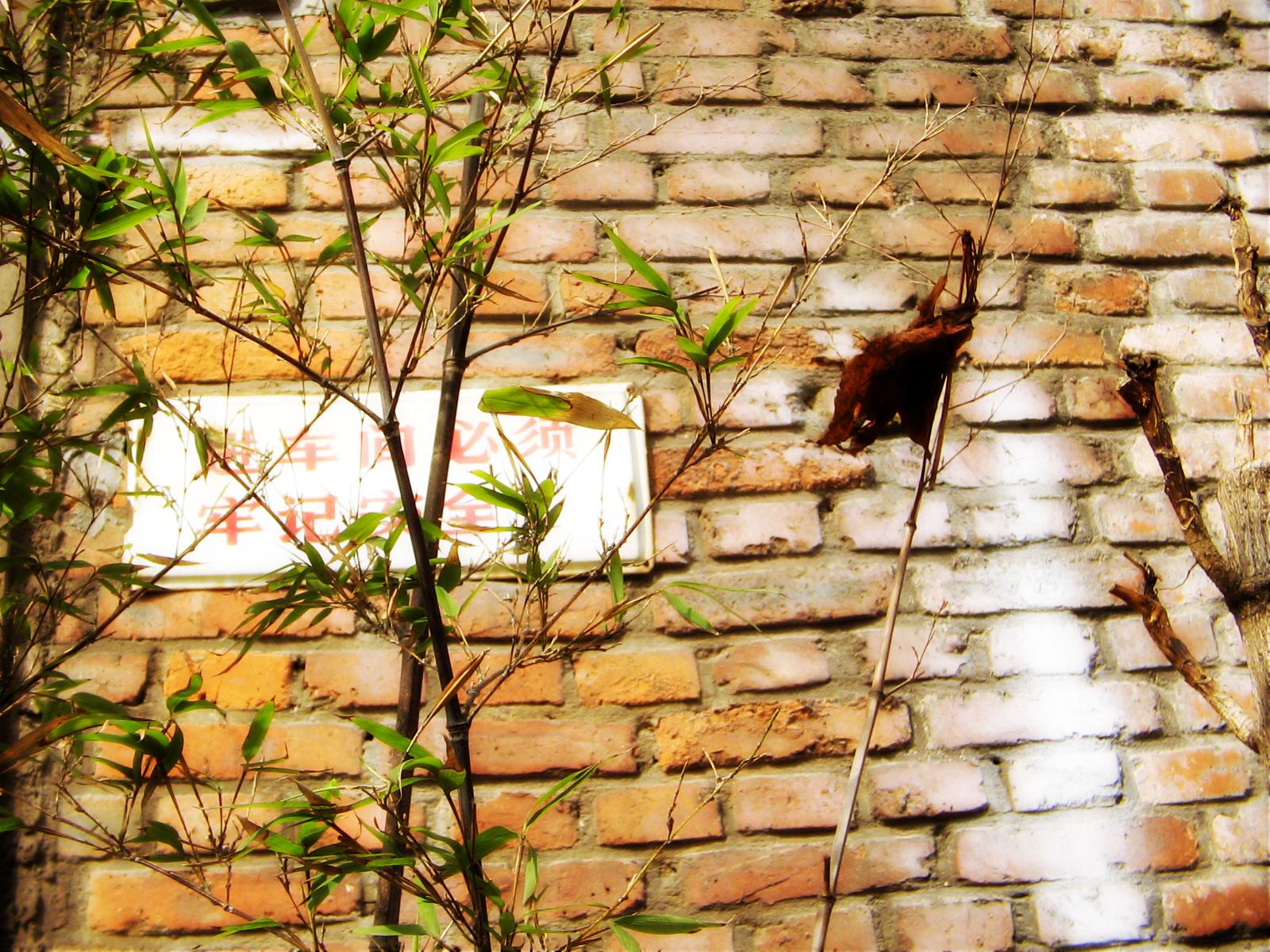
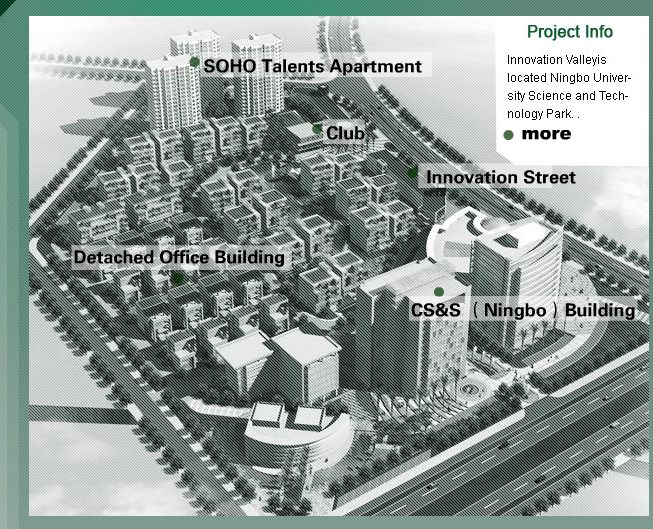
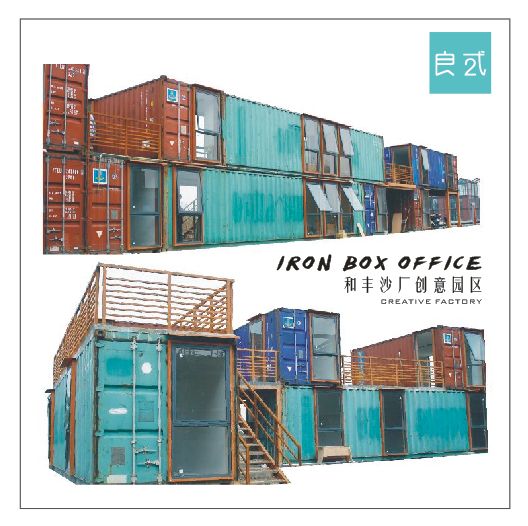
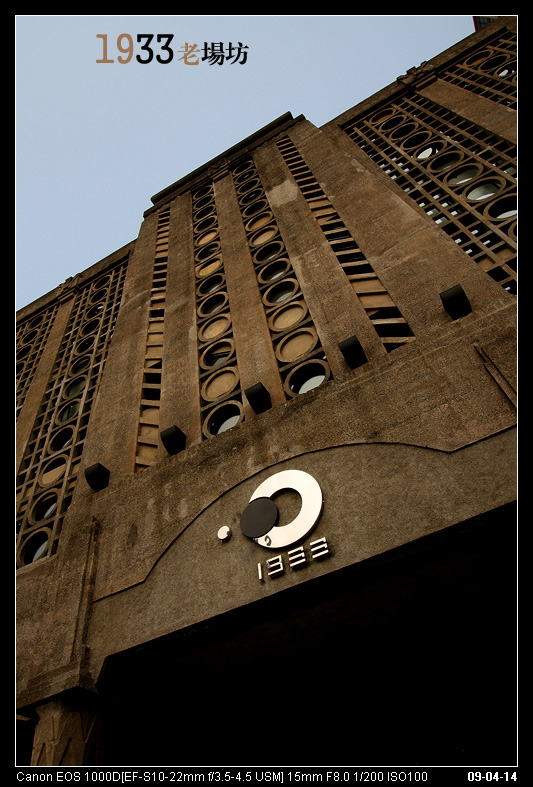

Recent Comments